November 2022, San Francisco and Oakland, CA. ZERO1: The Art & Technology Network (ZERO1) and Leonardo, the International Society for Arts, Sciences, and Technology (Leonardo/ISAST) are thrilled to announce that we have entered into a strategic partnership to amplify the impact of our respective organizations and integrate our extensive global networks.
The rationale for this partnership is evident in our closely aligned missions and visions; our shared history and legacy at the junction of art, science and technology. The resonance of our mutual commitments across creative sectors extends into our programs and the communities they reach. Leonardo has developed a robust international network spanning 135 countries through the readership of our flagship journal and book series, as well as the proliferation of Leonardo Art Science Evening Rendezvous (LASER) speaker series, now hosted in over 50 cities around the globe. ZERO1 has nurtured an international network through community-building during the ZERO1 Biennial that ran through 2012 followed by expanded engagement in 31 countries through cultural exchange facilitated as part of its American Arts Incubator and Creative Impact Labs. Both organizations have furthered transdisciplinary thought and practice through residencies, fellowships, labs, public art, summits, and symposia that contribute to the vibrant creative community we are thrilled to now bring together.
This burgeoning partnership will bring our two non-profit organizations into deep operational and programmatic collaboration, taking advantage of synergies and complementary program activities to become more efficient and effective in our work. Towards these ends, Leonardo has invited ZERO1 Founder, Andy Cunningham, to join its Board of Directors, and ZERO1 Executive Director, Shamsher Virk, will assume the role of senior director for programs & operations at Leonardo. Diana Ayton-Shenker, Leonardo CEO says, “We are thrilled to welcome Andy Cunningham to our Board, and Shamsher Virk to our team. Integrating ZERO1 leadership and talent into Leonardo enriches our work, capacity, and potential for positive impact.” ZERO1 Executive Director, Shamsher Virk, adds that “this partnership is an example of ZERO1’s commitment to collaboration with peers in the field and underscores our dedication to expanding the collective global network of creative minds.” Details of the operational partnership will be fleshed out over the coming months; the organizations have already begun working closely together to integrate programs, leadership and network. We look forward to a fruitful collaboration and deep partnership.
Open house for “Lima 2100: Collective Resilience through Adaptive Urbanism” in the virtual Museo de Arte Contemporáneo (MAC Lima) gallery, created and curated by Gabriel Kaprielian exhibiting work of American Arts Incubator — Peru artists (2020).
It’s been a little over a month since the American Arts Incubator — Peru (AAI Peru) program was completed. Reflecting back on the month-long exchange, the global pandemic and virtual format did not dampen the enthusiasm and brilliance of the participating artists. Instead, it challenged us to adapt and respond to the moment, framed by the past, while projecting onto the future. Meaningful connections were made, ideas and knowledge were shared, and amazing new artwork was created. By all accounts, the program was a huge success! Thanks to the dedication of many wonderful people that made this possible.
I led four workshops that introduced technology platforms, theoretical frameworks, encouraged discussion, and led to short exercises applying these tools with artists' ideas. Workshop 1 involved a collective “Psycho-geographic Mapping” of Lima using a virtual whiteboard canvas. In Workshop 2, artists created “Postcards from the Future” that showcased speculative visions of Lima in the year 2100. Workshop 3 introduced tools for digital 3D modeling to create a collaborative “Monument to the Pandemic.” Workshop 4 demonstrated the use of augmented and virtual reality to visualize the artists' work.
There were two guest speaker panels that introduced further discussion on the social challenge of urban development in Lima, focusing on the themes of climate change, social equity, and urban health. The first panel was centered around public space and included Dr. Patricia Kim (Monument Lab), Dr. Ghigo DiTommaso (Gehl Architects), and Lucía Nogales (Ocupa tu Calle). The second panel focused on socially-responsive artwork and included Nicolas Gomez Echeverri (MAC Lima), Natalija Boljsakov (UTEC), Ferran Gisbert (UTEC), and Kiko Mayorga (UTEC).
For the last ten days of the program, each artist created new artwork responding to the theme, “Lima 2100 – Collective Resilience through Adaptive Urbanism.” These works took the form of 2D collage, audio and video, and digital 3D forms. I was amazed by the creativity and thoughtfulness of each project and the passion each artist demonstrated in developing their work in such a short amount of time.
Artists presented their artworks and concepts to a guest panel where they received outside feedback. The final exhibition was originally planned to take place in the Museo de Arte Contemporáneo (MAC Lima). Instead, we created a virtual reality gallery in Mozilla Hubs of MAC Lima with a curated exhibition of each artist’s work. This was the first time we were able to gather in the same "room," walking around and chatting, viewing the artwork as a collective project.
I want to give a big thank you to all of the participating artists, our partners in Lima including UTEC, MAC Lima, and the U.S. Embassy, as well as our guest speakers and panelists. This program has introduced new ideas and understanding in my creative practice and expanded my ecosystem of collaborators. I am grateful for the opportunity to have taken part in AAI Peru.
All AAI Brazil projects can be experienced at www.aaibrazil.com
The entirety of this experience, from beginning to end, is something I will cherish and continue to be inspired by as I go forward in my art practice. From the relationships forged on the ground to my amazement of the vision and voices of the participants, and for our entire team’s resilience and creative pivoting in response to the pandemic, I am forever grateful.
When I arrived in Belo Horizonte, there was a charge in the air. It was something that was hard to pin down in the moment; it felt like a fire inside. After talking with people, learning their stories and their struggles, as well as their similarities to people I knew back home, the urgency to amplify the humanity in our shared experience burnt in me like a beacon. Whatever was to be created in this short time we had together had to transcend convention, and inject a much-needed narrative into the often cold landscape of art and technology — breathing life into it.
There were a lot of meaningful exchanges and experiences along this journey, but the ones that really stood out to me were the events that inspired us to create portals for healing — and to witness the participants embrace and overcome the challenges of creating team-based virtual experiences while in physical isolation.
Upon my arrival in Belo Horizonte, Francisca of our host partner JA.CA, took me to the opening of a new exhibition entitled "VAIVÉM," which showcased the work of Indigenous Brazilian artists and the narrative of the hammock.
There, I met an Indigenous artist and healer named, Iba, who sang traditional healing songs and linked those songs to the murals he had painted on the walls. I talked with him in my native language and he talked in his; we were laughing at the similarities in our creation stories and symbologies, and he told me his work was entirely about building gateways for healing, or portals. We laughed again, because that is exactly what my practice was/is and what I wanted to create during the incubator.
Needless to say, the participants took every tool and every opportunity that was presented to them to tell their stories, and they delivered. Watching their rapid progression from learning 3D scanning, projection mapping, augmented reality, and finally virtual reality, was simply incredible.
The teams' abilities to seamlessly incorporate these tools into a very human experience on a completely unfamiliar platform was beyond anything I could have expected. When it was all said and done, we augmented a new, uncharted digital landscape with reality and humanity. Life was breathed into each project — life that will outlive our own.
American Arts Incubator — Colombia, entitled "Laboratorio en las Fronteras," brought together a group of 28 visual artists, filmmakers, creative producers, musicians, educators, and social advocates to explore migration and identity in the context of the Colombia/Venezuela border crisis.
Just as I was about to begin a journey to Barranquilla to lead the lab in person, the world went on lockdown due to COVID-19, and the program went virtual. Through a series of online workshops exploring personal narrative and documentary, interactive media, emerging technologies, social practice, and public art – we co-created a plan for a web-based virtual museum where the work could be shared and experienced by a global audience.
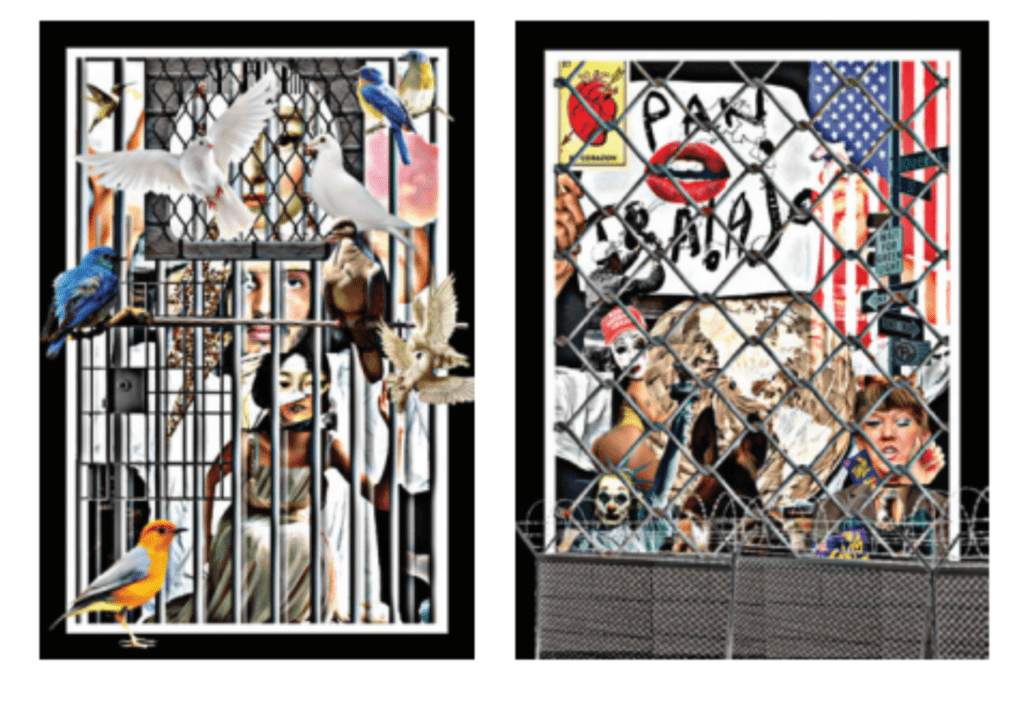
Each project is designed specifically for the virtual gallery we created, and also exists in the world as the creative expression of an independent artist attempting to survive the pandemic. In the Lab, the barriers we faced and the boundaries we crossed became part of work. The stories embedded in the virtual gallery reflect the powerful lived experiences of the participants at this unique moment in time.
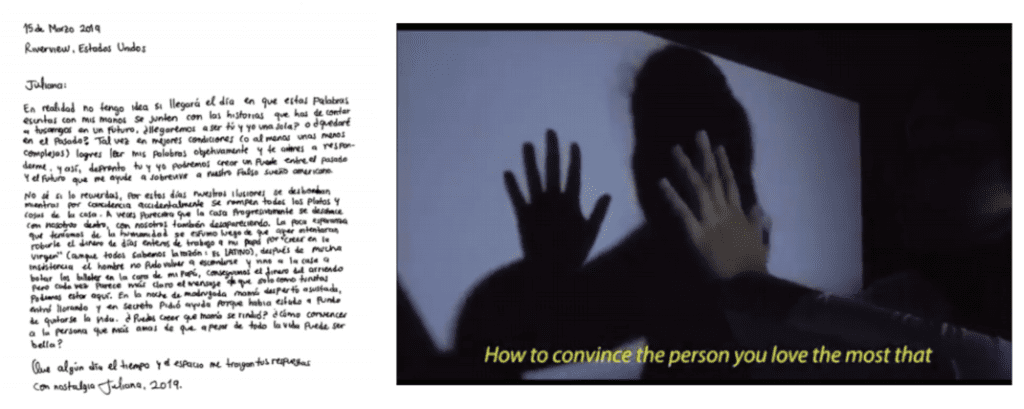
Four themes emerged from weeks of discussion that the artists chose to organize their work in the galleries: Fragments, Refuge, Reconfiguration of Identity, and Movement/Stillness. The projects included powerful stories of survival using photography, 3D modeling, poetry, single channel video, music, collage, augmented reality, and documentary.
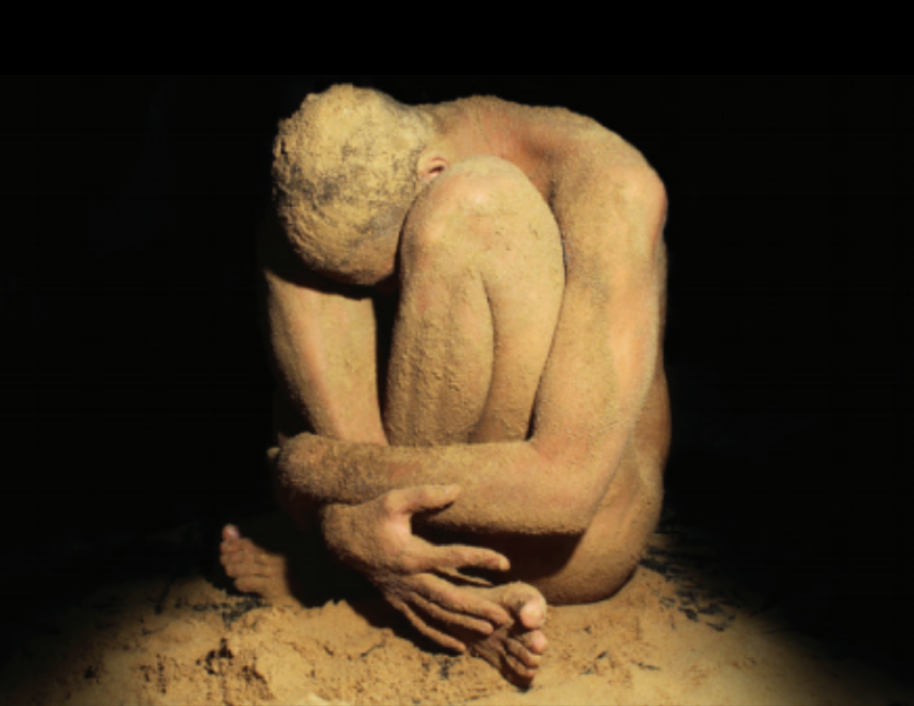
At first, the artists were hesitant to draw on their own lives for inspiration; they had wanted to use the opportunity of American Arts Incubator to work with communities at the border — to amplify their stories and raise awareness of a human rights crisis that was disappearing in the crush of coverage of the pandemic. Through the work of the Lab, the artists bravely centered their own life experiences instead and found their voices in a single phrase: we are all Migrants.

As we reimagine what our global future will look like through this darkness, I am grateful for the time I got to spend with this incredible community of artists who showed up online together for a month, hours at a time, and worked on projects alone in their homes, through quarantine, rolling blackouts, curfews, and extraordinary heat. We are all looking forward to the time when we can move the work from the virtual galleries into the streets, and into the world. Explore the virtual museum here.

I was really looking forward to spending time in Kyiv, Ukraine this past April, but my plans were thrown for a loop by the COVID-19 pandemic. With great assistance from ZERO1, I pivoted in the short space of two weeks to a fully online experience. It was also fortunate that my incubator topic was art and artificial intelligence, which meant it could be conducted mostly through digital means.
Still, that meant that I would be holding the workshop in two languages, sometimes with a professional interpreter, and sometimes not, across a seven-hour time difference.

After giving my artist talk in conjunction with Bryan Furman from the Cultural Affairs Office at the U.S. Embassy in Kyiv, I spent one session entirely online getting to know my two dozen or so Ukrainian artists, scattered throughout the country in strict lockdown inside their homes.
My on-the-ground host collaborator in Kyiv was IZOLYATSIA, Platform For Cultural Initiatives, originally based in Donetsk. I was assisted by Mykhailo Glubokyi (Misha) and Oleksandra Khalepa (Sasha).
The selected artists for the incubator were VJs, visual artists, graphic designers, programmers, engineers, musicians, sound designers, and individuals adept at working in virtual reality. Save for one participant though, no one had fully worked with machine learning before, which is the fundamental aspect of artificial intelligence.
Over the course of three days, I showcased some of the fundamentals of machine learning through art via Zoom sessions. At the same time participants were engaging in the lectures, they began posting their ideas for team projects asynchronously in Slack.
At the end of the three days, we met online and went over every artist's project idea until settling on four themes: 'Conspirology,' Environmental and Moral Responsibility, Isolation and Connectedness, and Mudra — a translation tool for Ukrainian sign language.
For the next two weeks, we dove into into accelerated development. I met with each team in Zoom from my house in New York City, as the participants were scattered throughout Ukraine.

We had only one day of presentation rehearsal to show the final works-in-process to an international panel of AI and art experts for feedback: Arif Khan of Alethea.ai, Misha Libman of Snark Art, Gene Kogan of Abraham.ai, and Vanessa Chang, a well-known San Francisco based curator.
What really surprised me was the relative ease and speed at which the artists, who had not known one another previously, were able to adapt to forming collaborative teams that used accelerated development tools. They were able to develop coherent and plausible proof-of-concept designs.
We have now concluded the initial phase of the exchange, but some of us hope to continue by forming a media arts alliance between the Baltics and Ukraine. We have a meeting scheduled for early June, and I am already looking forward to the results.
People in social distancing circles at San Francisco's Dolores Park amid the coronavirus outbreak on June 9, 2020. Photo by Lynn Friedman is licensed under CC BY-NC-ND 2.0.
The recent global pandemic has disrupted all of our lives, while highlighting a myriad of “wicked problems” facing cities. In just a matter of months, cities look and feel different. For many, we are looking at them out our window or within the small perimeter in our neighborhood. The isolation during shelter-in-place has shed light on the importance of community and public space in all of our lives.
This is a time for collective resilience.
As I will not be traveling to Peru physically, I’ve been working on adapting the exchange to a remote platform that utilizes technology for collaborative engagement through virtual and augmented reality environments. It has been challenging to re-envision a program focused on the social challenge of urban development in public space during a time of quarantines and web-based communication. However, I am optimistic about the potential for reframing these challenges as opportunities for creative exploration with the American Arts Incubator participant cohort in Lima.
During the past few months, I have been reflecting on the implications of the pandemic on the way cities are used and how they are designed. In a way, the pandemic affords us time to contemplate the present conditions and envision a better future for our cities. I’m interested in how art + technology can be leveraged to inspire collective optimism and enable participatory urbanism.
In my own creative practice, I have explored ways to contextualize and make visible the past, present, and potential futures of cities. This often involves mapping to visualize a geo-spatial and layered place narrative. I look forward to learning more about Lima from the selected group of interdisciplinary artists through their personal psycho-geography of the city and speculative vision of what the city could be. If we traveled to Lima in the year 2100, what might we write back about how the city and world has changed?
In recent years, I’ve been especially interested in interactive and participatory artwork that actively engages the audience in a process of discovery and agency in creating collaborative visions of adaptive urbanism. As we focus on Lima’s public space as a collectively owned democratized canvas, I am excited about the discussion, creative projects, and community that will come out of it. In my role as Lead Artist and facilitator, my goal is to help amplify the creative voices of the local participant artists within their communities and abroad.
Note: Rashin Fahandej's "Future of Inclusion Lab," a series of virtual co-creation workshops that provide technology and resource access to a mixed group of Austria-based creatives, is currently accepting Austria-based participants. Read the open call in English/German and apply by Monday, June 21 >>
First is the moist breeze, then the faint sound of water rhythmically slapping against the bank. The soles of my feet are not used to the unevenness of the cobblestones. I walk alongside the Danube, witnessing people crossing paths, exchanging greetings; encounters coming together as a jagged yet porous edge of beautifully diverse experiences. Since the Roman Empire, Linz has been a transnational, transethnic crossroads. I hear the soft sounds of German, Turkish, and Latin as I watch my daughter’s nimble fingers scroll through the river path, as she too explores the far away lands with the intimacy of her touch through a glass and metal rectangle- the interface of my phone.

For the past year, my preparation for the American Art Incubator at Ars Electronica has been interwoven with visions of myself tracing the city’s complex history in my daily walks from Atelierhaus Salzamt to Ars Electronica — crossing the Nibelungenbruke bridge over the Danube, walking the streets, catching the aroma of fresh baked Linzer Torte. Daydreaming my month-long stay in Linz, I looked to accounts of the past and present in Austria and Linz and anticipated with excitement the city’s future, a vision that is nurtured in spaces like Ars Electronica.
With the sudden shift of this exchange to a virtual program in response to the pandemic, I am left to live the experience of being in the presence of a place and its people through the medium of technology: searching images, reading first-hand accounts, listening to Annea Lockwood’s “A Sound Map of the Danube.” These sources of information are like shattered particles of a reflection on the water’s surface, constantly flickering in and out of a vision that could be whole.
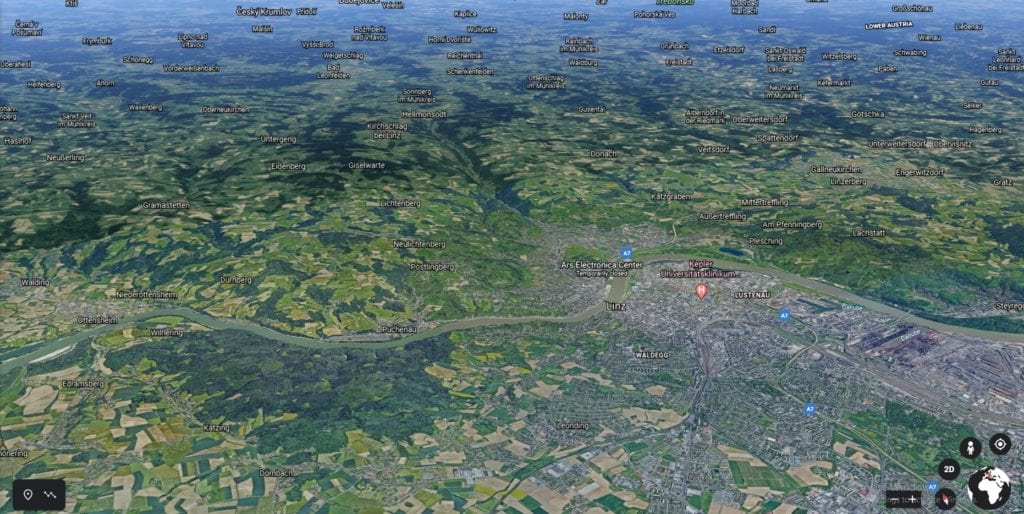
The global pandemic has impeded our ability to connect with the places and people we love, or had yet to love, in person. However, individuals and organizations have opened up a floodgate of virtual access to online content and experiences. Technology has solidified its role as the connective tissue among people from different nations within one city or across continents. On the other hand, the pandemic has also brought into sharper focus structural injustices and systemic inequities. In the field of Art and Technology, specifically, it is a call to construct equitable networks of support that center the most vulnerable.
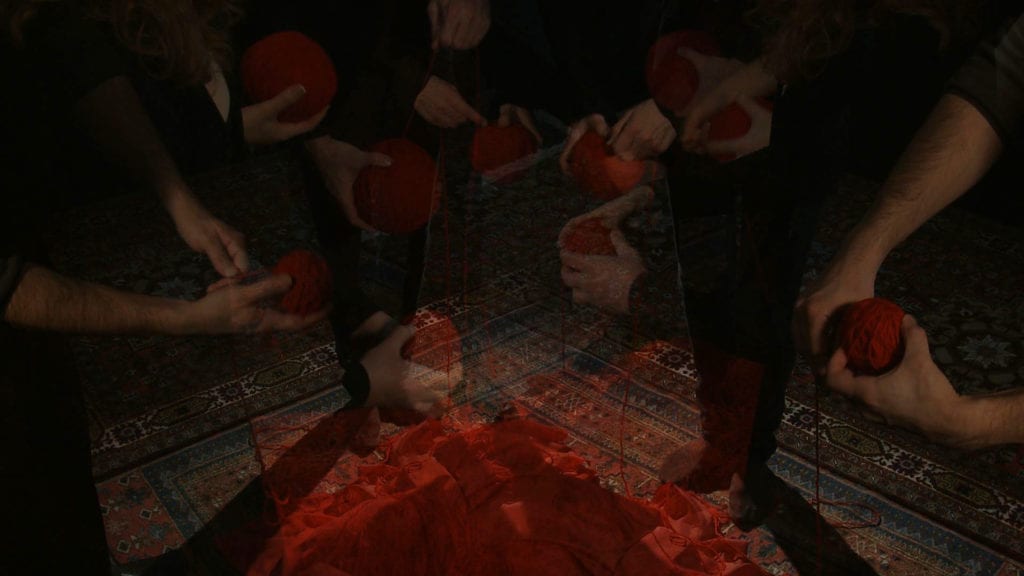
As a socially-engaged artist, I define my practice as “Art as Ecosystem,” a network of collaborations with a multiplicity of narratives that investigates social systems and animates public sites and online platforms, shifting the dominant narratives around urgent social challenges. Emerging technologies and co-creative processes form opportunities for cross-sector collaborations centering on personal stories. In this act of storytelling, the personal political realities of intersectional issues such as race, gender, immigration, and class become fluid. From this place of fluid holistic narrative, “Art as Ecosystem” arises.

My research for the past four years has been centred on “A Father’s Lullaby," a community co-creative project that uses poetic aesthetic as its critical lens to address the social challenges of mass incarceration in the United States. The project highlights the role of men in raising children, and their absence due to racial disparities in the criminal justice system. The work moves across multiple platforms, engaging people from a spectrum of experiences — from formerly incarcerated men to fathers that are federal probation officers. Co-creation engages diverse groups of participants that are mobilized by the moral responsibility of everyone to speak out on social injustices, not just those most impacted. The result of collaborations and tool-sharing workshops manifest as site-responsive installations shared in the community where it was created.

Pedagogy is intertwined with my artistic practice. As an assistant professor at Emerson College, I implement community co-creation methodologies in shaping classrooms. In the spring of 2020, my “Immersive Storytelling: Co-creation of VR and 360 Video” class brought together formerly incarcerated fathers, probation officers, and students. With the mid-semester shift to online academia, the collaboration relied on virtually using Augmented Reality and tools accessible to the fathers- their cellphones. The result of these collaborations, “From Father, With Love” is a set of postcards, each augmenting a father’s story through audio, visual, and 3D images.
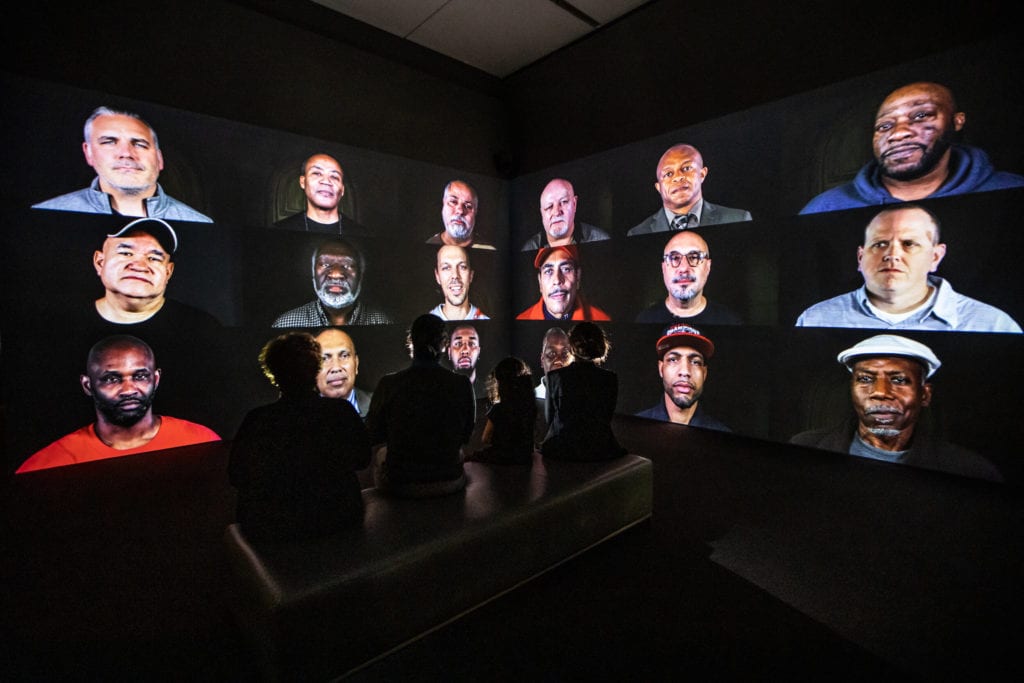

“Diversity gives me a seat at the table, inclusion allows me to have a voice at the table, but equity gives me the ability to run that table.”
DeAnna Hoskins, the president of Just Leader USA.
Partnering with Ars Electronica, an international hub for “experimentation, evaluation and reinvention” in art, technology, and society, presents a unique opportunity to envision radical changes to address critical questions of inclusivity, equity, and sustainability with underrepresented creators at the table. What are the conditions that need to be in place for equitable practices to stay sustained? Our collective efforts with local participants, leaders, and Ars Electronica is an incubator for these inquiries. With only a virtual presence, what are the effective ways to lean on the expertise and lived experiences of local collaborators, Ars staff, and community members? I am excited to work through the many questions collectively to imagine the future of inclusivity together.
*Deutscher Text unten
Ars Electronica, in collaboration with ZERO1, U.S. Embassy Vienna, and the U.S. Department of State’s Bureau of Educational and Cultural Affairs, is pleased to announce the open call for participants in American Arts Incubator — Austria.
American Arts Incubator (AAI) is a creative exchange program that utilizes community-driven digital and new media art projects to instigate dialogue, build communities, bolster local economies, and further social innovation. Each incubator addresses a relevant social or environmental challenge such as economic equity, youth empowerment, gender equality, and environmental sustainability.
AAI — Austria consists of a series of art and technology workshops taught by American artist Rashin Fahandej focused on addressing social inclusion, the development of project prototypes, and presented by Ars Electronica to the public. Participation in the incubator is free of charge. Participant teams will receive small grant funding to develop their collaborative project prototypes. This year’s program will be held as a virtual exchange through online collaboration from July 2 - August 2, 2020.
Rashin Fahandej is an Iranian-American multimedia artist and filmmaker. Her projects center on marginalized voices, and the role of media, technology, and public collaboration in generating social change. A proponent of “Art as Ecosystem,” she defines her projects as “Poetic Cyber Movement for Social Justice,” where art mobilizes a plethora of voices by creating connections between public places and virtual spaces. She is an Assistant Professor of Interactive and Emerging Media at Emerson College.
We are looking for Austria-based participants with:
Rashin Fahandej’s “Future of Inclusion Lab” is a series of co-creation workshops with the American Arts Incubator at Ars Electronica that provides technology and resource access to a mixed group of Linz-based creatives, including women and local immigrants. Fahandej’s methods take on the lens of “Art as Ecosystem,” creating a network of collaborations with a multiplicity of narratives that investigate social systems and occupy public sites as a critical discourse. The workshops explore social inclusion by investigating new media literacy and by providing access to cutting edge tools and technology to co-create prototypes for immersive and poetic reflections and experiences.
<< ONLINE REGISTRATION FORM >>
Submissions will be accepted until June 21, 2020.
For more information, please contact Veronika Krenn veronika.krenn@ars.electronica.art.
Open Call für Teilnehmer: American Arts Incubator - Austria
Ars Electronica freut sich, in Zusammenarbeit mit ZERO1, der Amerikanischen Botschaft in Wien, und dem Bureau of Educational and Cultural Affairs des U.S. Department of State, das “American Arts Incubator - Austria” Programm bekannt zu geben.
American Arts Incubator (AAI) ist ein kreatives Austauschprogramm, das Medienkunstprojekte nutzt, um einen Dialog anzuregen, Gemeinschaften aufzubauen, die lokale Wirtschaft zu stärken und soziale Innovationen voranzutreiben. Jeder Inkubator befasst sich mit einer relevanten sozialen oder ökologischen Herausforderung, wie z.B. wirtschaftliche Gerechtigkeit, Stärkung der Jugend, Gleichstellung der Geschlechter und ökologische Nachhaltigkeit.
AAI - Austria besteht aus einer Reihe von Kunst- und Technologie-Workshops, die von der amerikanischen Künstlerin Rashin Fahandej geleitet werden und sich auf den Themenschwerpunkt der Social Inclusion konzentrieren. Im Rahmen des AAI werden Prototypen in gemeinschaftlicher Arbeit entwickelt und als Abschluss des Programms im digitalen Format des Ars Electronica präsentiert. Die Teilnahme am Inkubator ist kostenlos. Die Projektgruppen erhalten einen kleinen Zuschuss zur Entwicklung ihrer Prototypen. Das diesjährige Programm findet vom 2. Juli bis 2. August 2020 als virtueller Austausch durch Online-Zusammenarbeit statt.
Rashin Fahandej ist ein iranisch-amerikanischer Multimedia-Künstlerin und Filmemacherin. Ihre Projekte konzentrieren sich auf marginalisierte Stimmen und die Rolle der Medien, der Technologie und der öffentlichen Zusammenarbeit bei der Erzeugung von sozialem Wandel. Als Befürworterin von “Kunst als Ökosystem” definiert sie ihre Projekte als “Poetische Cyber-Bewegung für soziale Gerechtigkeit”, bei der Kunst eine Vielzahl von Stimmen mobilisiert, indem sie Verbindungen zwischen öffentlichen Orten und virtuellen Räumen schafft. Rashin Fahandej ist Assistenzprofessorin für Interactive and Emerging Media at Emerson College.
Wir suchen in Österreich lebende Teilnehmer*innen mit:
Rashin Fahandej’s “Future of Inclusion Lab” ist eine Reihe von Co-Creation-Workshops mit dem American Arts Incubator und der Ars Electronica, die einer gemischten Gruppe von Linzer Kreativen, darunter Frauen und einheimische Migrant*innen, Zugang zu Technologie und Ressourcen bietet. Unter dem Aspekt des “Kunst als Ökosystem”, schaffen Fahandej’s Methoden ein Netzwerk von Kooperationen mit einer Vielzahl von Erzählungen, die soziale Systeme untersuchen und öffentliche Orte als kritischen Diskurs besetzen. Die Workshops erforschen Social Inclusion, indem sie die neue Medienkompetenz untersuchen und Zugang zu den modernsten Werkzeugen und Technologien bieten, um Prototypen für immersive und poetische Reflexionen und Erfahrungen zu schaffen.
<< ZUR ONLINE-ANMELDUNG >>
Einreichungen werden bis 21. Juni 2020 angenommen.
Für weitere Informationen kontaktieren Sie bitte Veronika Krenn per mail veronika.krenn@ars.electronica.art.
Open call announcement for Laboratorio en las Fronteras.
On April 19, 2020, I was supposed to be giving an Artist Talk at the Museo de Arte Moderno in Barranquilla, Colombia to kick off my American Arts Incubator exchange, Laboratorio en las Fronteras (Lab at the Borders). In the global urgency of lockdowns, quarantines, and travel bans, that talk will not be happening. My body will not go to Colombia. But perhaps we can overcome the obstacles of disease, geography, language and culture. Perhaps we can leverage available technology to do something meaningful inside the constraints of pandemic culture.
In a crisis, artists always go to work.
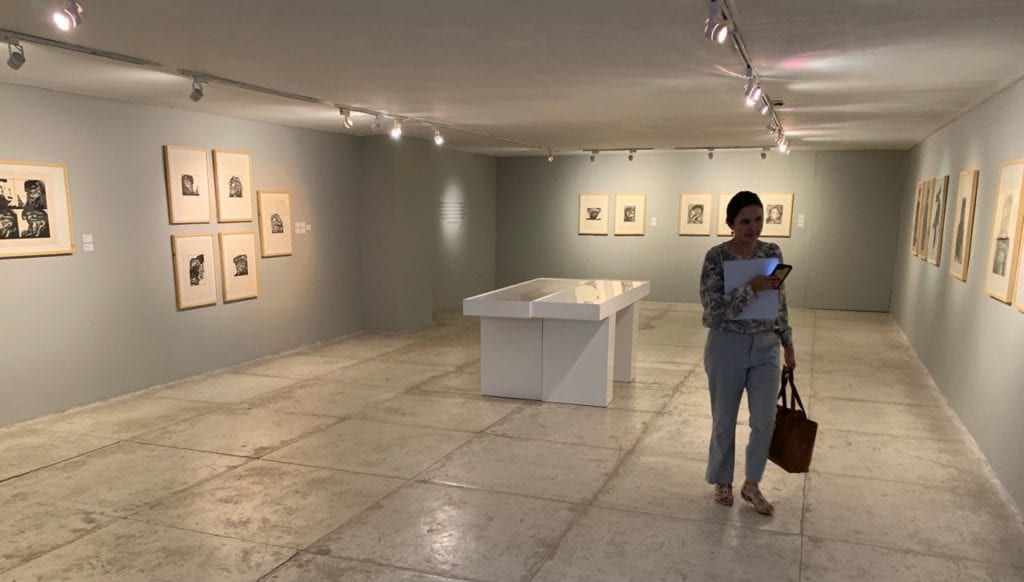
I’ve been attempting to learn Spanish online with a tutor from Colombia and my Babbel app, plan workshop rituals, sharpen the curriculum, visualize how we could possibly co-create a multi-generational interactive media exhibition reflecting the multiple identities of migration, displacement, and statelessness. Can we possibly create a virtual creative lab without any in-person connection and interaction? Who am I to think that we could move this experience online and actually incubate projects that will explore the lived experience of diverse communities at the border, contribute to peace-building, protect human rights workers and vulnerable refugees, and rise up the stories of those so frequently silenced?
I do think that something meaningful and beautiful will come of this. We just can’t possibly know what it is right now. I do know it is very important to be present in the unknowing.
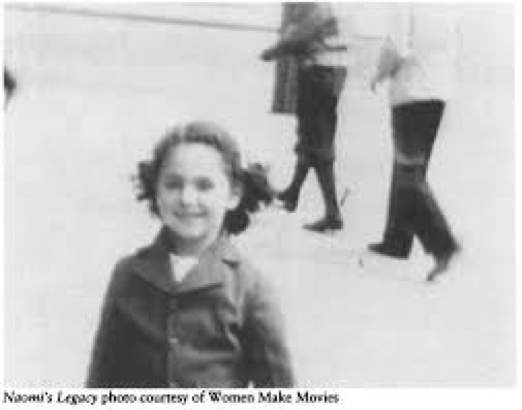
Today, I have the feeling that I’ve been preparing for this moment my whole creative life. At Oberlin College, I completed an independent major in Ethnopoetics. As a young filmmaker, I worked a lot in re-articulating and re-photographing home movie footage into new and unexpected narratives. My film that went to Sundance in 1994 was a collage of found footage and voiceover, an essay on my own infertility. It was my Saturn return, and I needed to discover who I was. Now, as a facilitator, project director and educator, a quarter of a century has passed, and I’m working on my own invisibility.
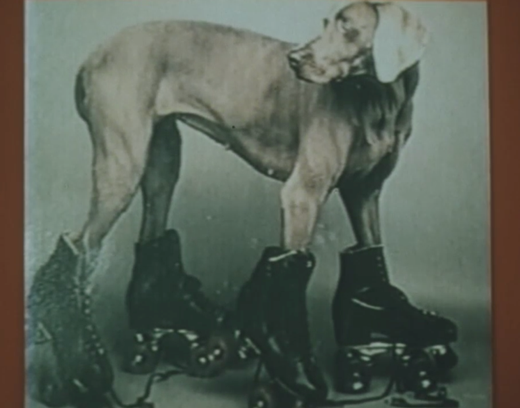
At some point in my creative practice, I turned away from making my own projects and became a visual, human-centered ethno/futurist obsessed with the intersections of celluloid, pixels and codecs, and the social and cultural implications of the transition from analog to digital to virtual – especially in documentary.
Leading the Producers Institute, the first new media lab in the U.S. for documentary filmmakers and journalists, I could see up-close the power of having artists, technologists and activists together, co-creating from day one. Those labs (at the Bay Area Video Coalition in San Francisco) worked because we were together for ten endless days and nights.
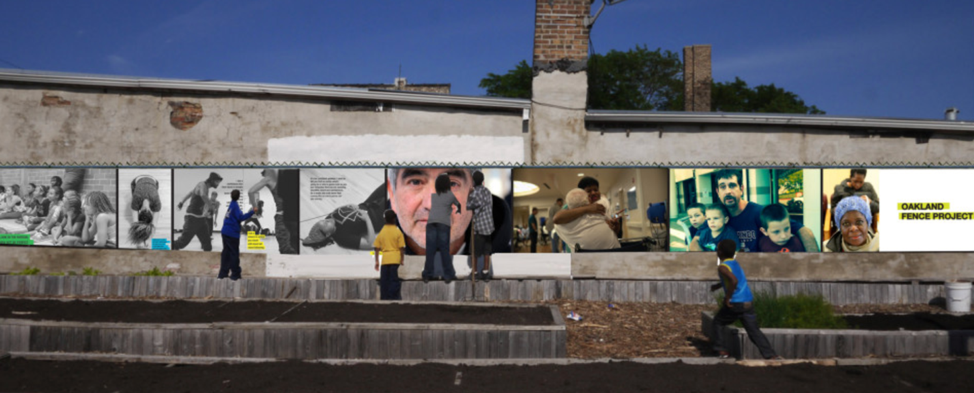
A few years later, directing the Oakland Fence Project, we created one of the first story-based A/R apps that enabled the subjects in still images to speak, to “come-to-life.” That technology augmented 5-foot photographs with stories and voices rarely heard.
It is in this space that the vision for the work will emerge. I know it.
Photo by PedRodarte is licensed under CC BY 2.0.
I’m writing this blog post in the midst of final preparations for my journey, as I leave wintry Chicago en route for summertime in Belo Horizonte, Brazil! This will be my very first trip to Brazil, and my first ever visit to South America. I’m excited to meet the partners on the ground, get settled in, and make some waves with the 25 participants we selected for this Incubator. We’ve chosen an extremely talented and diverse cohort of artists, technologists, and architects from within Belo Horizonte to participate.
For this implementation of AAI, we’ll be addressing the social challenge of economic inequity through a workshop series I’ve developed for this entitled — “Augment Earth: Embedded Futures,” where we’ll be creating extended reality portals around the city as a generative seed of discourse for equity and collective futurity.
As an artist and architect based here on my ancestral lands, my practice revolves around notions of Indigenous Futurism and its tangible manifestations. I recently contributed to the Chicago Architecture Biennial, where I was invited as their first Native American architect. I created a projected augmented reality installation of a burning hut entitled, “Hayo Tikba (The Fire Inside)” dedicated to Indigenous mound building civilizations and their living descendants that were forcibly displaced in the creation of virtually all U.S. cities east of the Mississippi River.
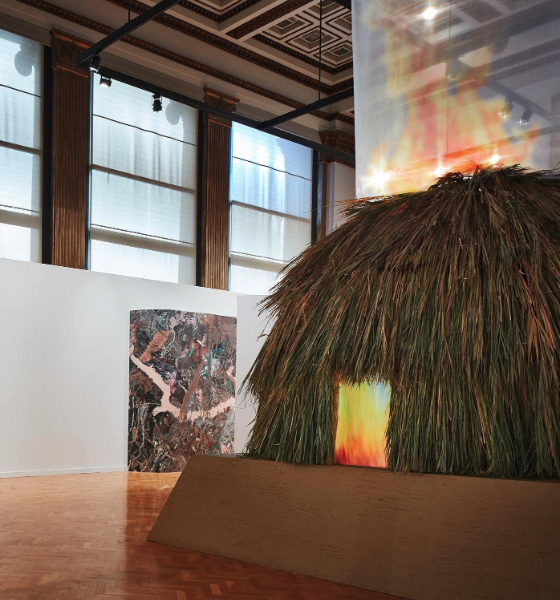
I’ve also been conducting recent explorations in holographic reanimations of ancestral craft, like in my installation “Transmissions,” populating galleries and institutions in different applications referencing the different forms of Indigenous craft respective to geographic location.

For this series of workshops in BH, I’m really looking forward to activating portals throughout the city: portals of thought, experiential interactivity, knowledge, and hope through the many narratives and talents of our group.
Our incubator will culminate in an open house and panel discussion where we will activate portals in and around our host site, the Banco do Brasil Cultural Center of Belo Horizonte, alongside our host partners JA.CA and U.S. Embassy Branch Office Belo Horizonte.

Santiago X's incubator will take place from March 12 - April 4, 2020 with support from JA.CA and U.S. Embassy Branch Office Belo Horizonte.
I first visited Kyiv Ukraine in 1992, the first year of Perestroika, and again in 1993. I met Ukrainian artists in New York City by chance during an open art studio day in Brooklyn, and one of the artists I met was from Kyiv. She spontaneously invited me to visit her hometown, saying she would set me up with a place to stay (this was pre-AirBnb), and connect me with all of her artist friends.
I instantly made plans to go to Kyiv.
What I discovered was a strong community of creative practitioners who all seemed to know one another. Their network was wide, and extended into all the major cities of the former Soviet Union, as they had all attended school together. Their art practice was both conceptual and tactile, encompassing the plastic arts, i.e. painting, drawing, batik, metal, ceramics and sculpture. Though they were resource-poor, they were conceptually rich, and the fact that I was an artist from America intrigued them.
Now, 27 years later I am returning to Kyiv to work with Ukrainian artists, but this time around themes of artificial intelligence and art. It’s quite a leap in creative techniques since my previous visit. What is new is that Ukraine is rich in a new type of natural resource – computer programmers. According to a study by Deep Knowledge Analytics, taken from a database compiled by Clutch.co, Ukraine has the most outsourcing companies in artificial intelligence in both Eastern and Western Europe. The authors of the Deep Knowledge Analytic report also cite LinkedIn as listing more than 2,000 companies who develop AI related platforms.

This dovetails with my current arts practice, as I work with biometric indicators (brain computer interfaces) as well as AI. I created “Noor,” a fully immersive interactive brainwave opera, as well as “AIBO” an emotionally intelligent AI brainwave opera. I am also a Director of an high-end art and technology residency in New York called ThoughtWorks Arts that works with cutting-edge technologies such as cyborgs, illegal harvesting of genetic data, breath and virtual reality, facial recognition and AI, movement and robotics, volumetric filmmaking, blockchain and AI, as well as synthetic media. In addition, I run Art-A-Hack ™ a creative group collaboration that brings artists and technologists together to "make something new." The groups contain experts as well as non-experts, and it is this methodology or toolkit I will use when working with Ukrainian artists.

My host organization IZOLYATSIA is finding participants such as creative technologists, as well as artists both from Kyiv and outlying Ukrainian cities at their new location in Kyiv. IZOLYATSIA “orientates its activity toward the new Ukrainian generation that is involved in the creative and cultural sectors. We will work together to create projects on “Digital Literacy and New Horizons in AI and Art.” I am very interested to see the unique Ukrainian perspectives on technology and art.
Ellen Pearlman's incubator will take place from April 2-25, 2020 at IZOLYATSIA with support from U.S. Embassy Kyiv.
National Museum of Kosovo. Photograph by Bujar Imer Gashi - Own work, CC BY-SA 3.0, https://commons.wikimedia.org/w/index.php?curid=30814712
In a few weeks, I will be arriving in Pristina, Kosovo on the somewhat magical-feeling, transient leap year day, February 29th. That most of my travel from Pittsburgh, PA falls on this day will amuse me as I prepare for my month of leading workshops in youth empowerment to a group of Kosovar artists, makers, and dreamers.
When I was given my American Arts Incubator assignment, all that I knew about Kosovo was that there had been a war in 1999 while I was in my last months of high school. I asked around to my contacts to see if anyone had ever spent time there. Two people said that they had. One scolded me for my post about hoping to find moments of lightness and joy with the communities, even 20 years after the war. The other, a photojournalist who had also been there during the war, remembered her translators fondly as generous women who she kept in touch with as they married and had children. Her recollections of generosity and friendship from the people of Kosovo are what I am looking forward most to experiencing soon.
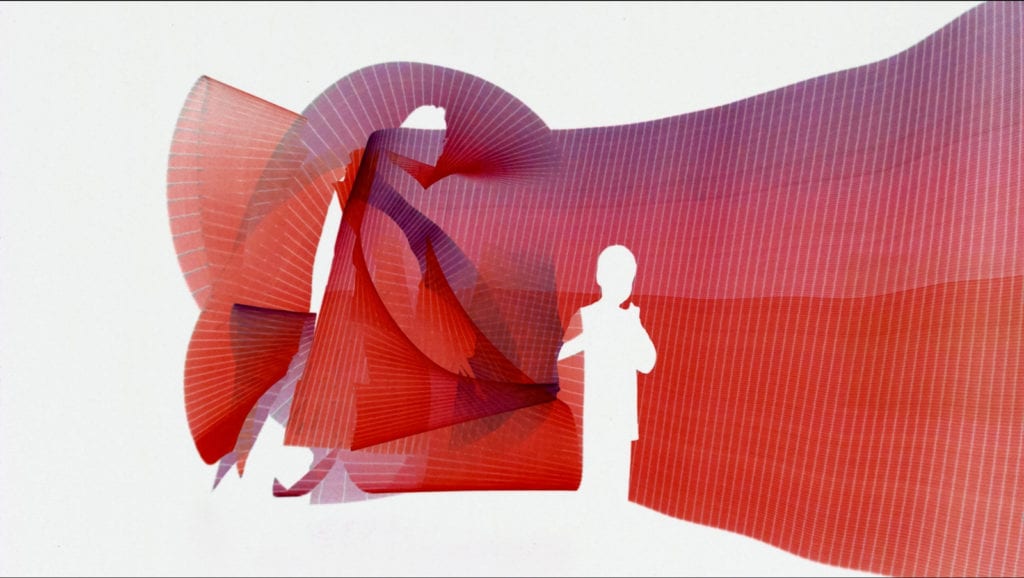
When I said moments of lightness earlier, I used the term intentionally, as much of my own art practice has used LEDs to show my bodily gestures with images and text in real time performances with projections; in other words lightpainting. The workshop that I will be conducting in Pristina, Tracing Pathways: Youth Movement, Light, and Wearable Technology, will lead participants in creating wearables with custom sewn LEDs that will be used in creating real-time projection pieces that can also trigger augmented reality animations and videos. After learning some of these techniques from my practice and discussing what youth empowerment means for them, the participants will be breaking into four groups to develop community-centered projects that will continue after my own departure.
I started working with LEDs in an early investigation of digital identity that merged lights, movement, and code in the days when Twitter couldn’t embed images. The investigation has grown and morphed beyond my initial expectations as a photographer and into my current practice. It now contains real-time projection, putting me in front of the camera, as well as setting up performances for others as a part of community-engaged, public art workshops.
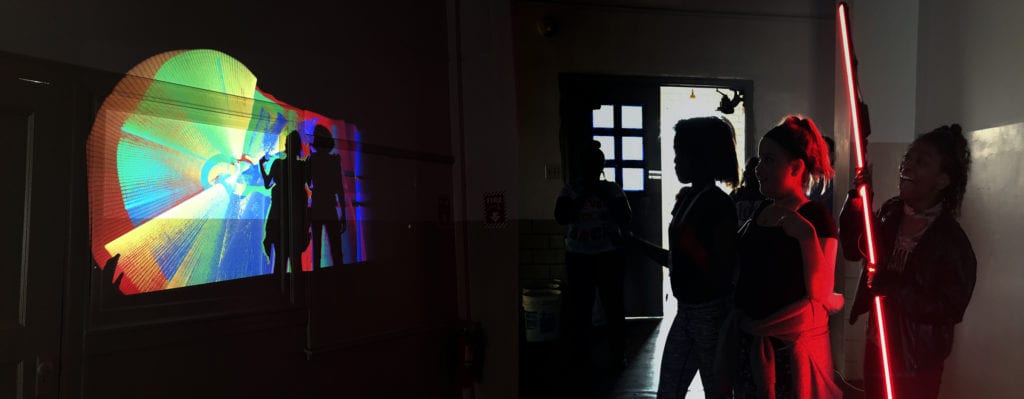
My practice now uses wearable LEDs, real-time projection, 6’ tall light sticks that look like something out of Star Wars, as well as contains community participants in public art workshops who wouldn’t necessarily consider themselves artists. The expansion of my individual, studio-based practice started when I started calling myself an artist, rather than just a photographer, even though I had always used performative means within my photography.
I am now designing systems and workshops to facilitate the joy that I feel when expressing my emotions through movement and light by allowing others to have this same magical experience that the technology facilitates. Community-centered public art has become an outlet where facilitation becomes collaborations with communities where we are all essential to the creation process, which often leads to unexpectedly joyful outcomes. I’m looking forward to my time in Kosovo and to see where some lights can take us.

Lori Hepner's incubator will take place from March 6-29, 2020 at the National Museum of Kosovo with support from U.S. Embassy Pristina.
American Arts Incubator (AAI) is an international new media and digital arts exchange program developed by ZERO1 in partnership with the U.S. Department of State’s Bureau of Educational and Cultural Affairs. AAI was created to support the collaboration of American artists and creative communities abroad to create impactful, community-driven public art projects that address local social and environmental challenges.
After a rigorous selection process, we are thrilled to announce the six lead artists chosen to participate in American Arts Incubator 2020:
These American artists will act as cultural envoys, using artistic collaboration to foster new relationships built upon common social values and the collective exploration of difference. They will travel abroad to collaborate with local communities in each exchange country during a month-long incubator, transferring skills in art, technology, and entrepreneurship. Through digital and new media art workshops, they will facilitate dialogue and explorations of a locally relevant social challenge. AAI provides small grants to participants who break into teams to prototype creative projects applying workshop skills to the challenge, and each exchange culminates in an open house that showcases the prototypes and solicits public feedback.
After the international incubators are complete, ZERO1 hosts one visiting international participant from each exchange country for 10-day professional development workshop in the San Francisco Bay Area during the summer to further build participant skills.
We are proud to welcome this year’s AAI artists into our ever-expanding network of multidisciplinary creators in art, science, and technology. In the upcoming year, we will be working together to provoke and explore new ideas that build more inclusive, engaged, and vibrant communities around the world.
At the end of May, I completed my ZERO1 American Arts Incubator exchange in Pachuca, hosted by CITNOVA. I arrived in Mexico City a few days prior to the beginning of my exchange, where I spent five days exploring museums, historical and cultural sites, and learning as much as I could about Mexico’s largest city before departing to Pachuca which is situated approximately 2 hours north in the state of Hidalgo.
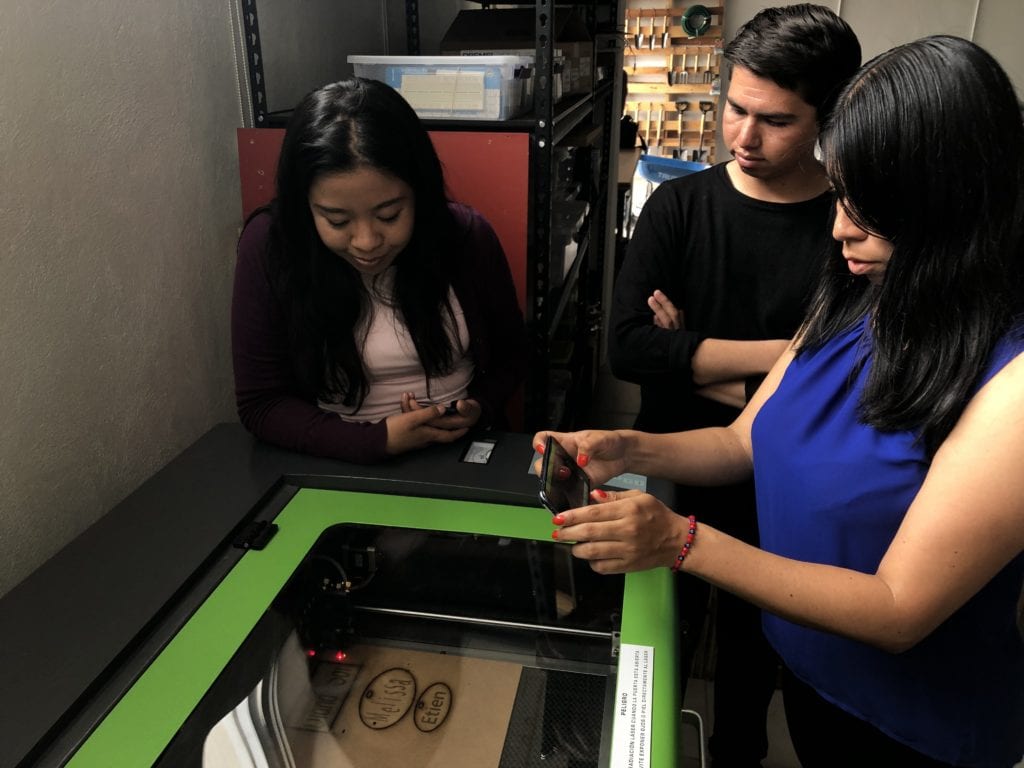
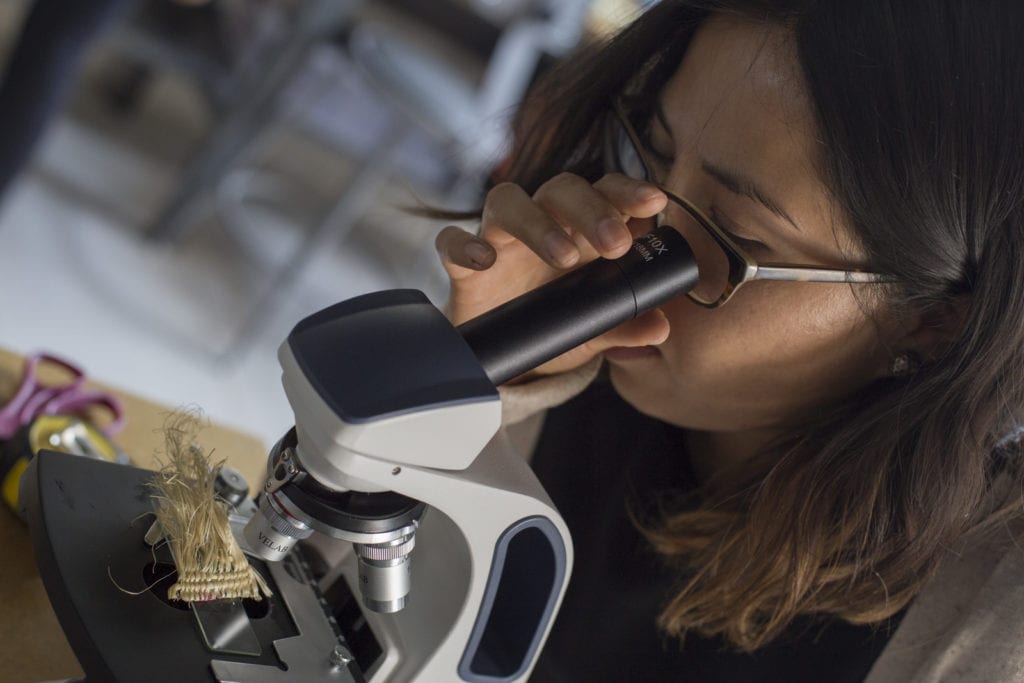
After the opening ceremony, the participants and I hit the ground running with four workshops. The workshops explored technical skills such as 3D printing, 3D scanning, laser cutting, and wearable electronics. All technical skills were framed within the context of considering how these technologies and processes could be used to create works and experiences that were rooted in narratives surrounding cultural identity. Through spending in-depth time together at the beginning of the program, I learned about the personal histories of each participant and the rich diversity of the group.
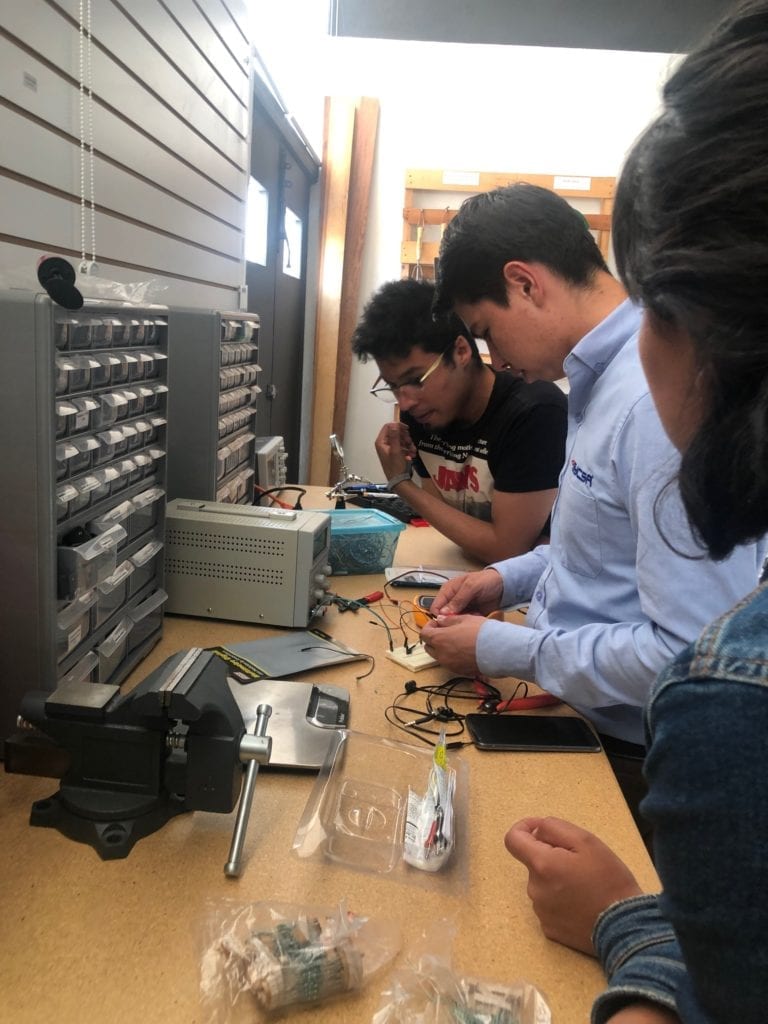
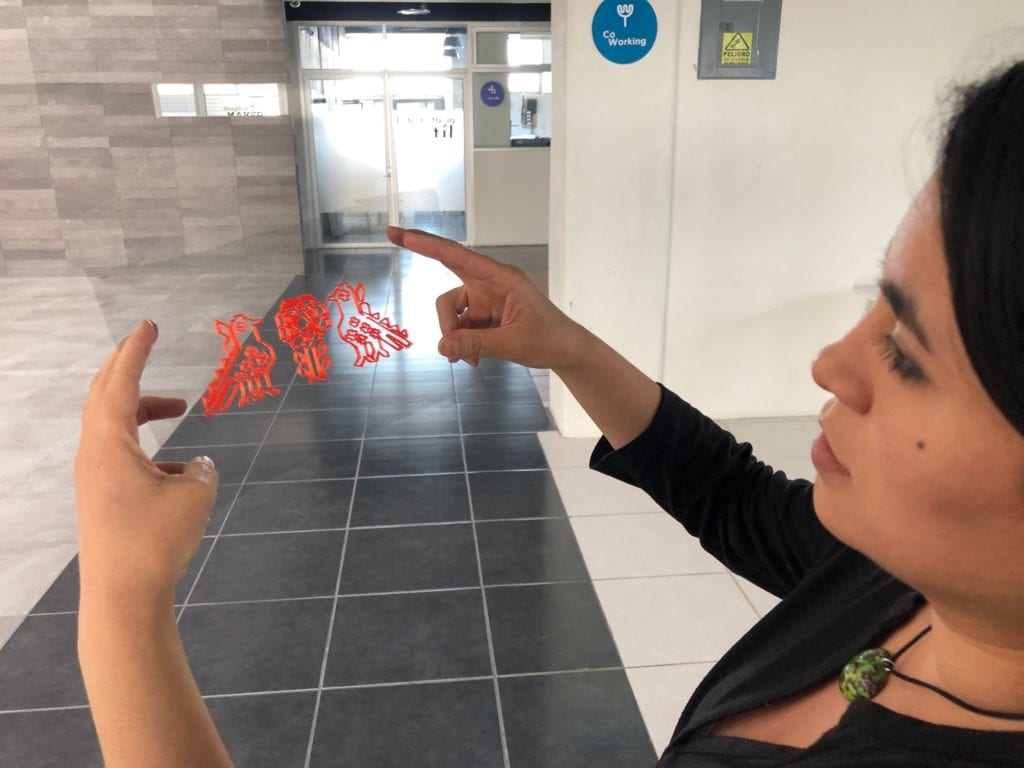
Upon arrival in Pachuca, I was greeted by CITNOVA with a fantastic opening ceremony for our program. In attendance were representatives from the U.S. Department of State Education and Cultural Affairs, as well as local government officials and other community members. It was a great way to start our experience and the first day for me to meet the participants and learn more about Pachuca.
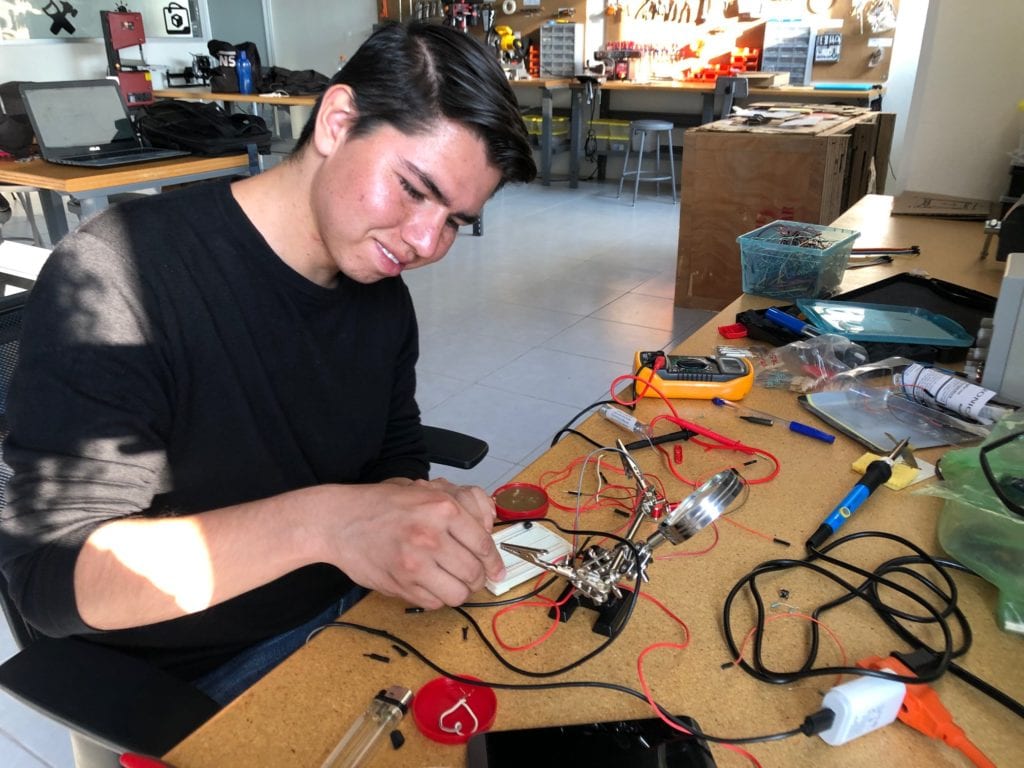

As part of our creative research, we visited several sites in the greater areas surrounding Pachuca including Las Prismas, Atlantes de Tula, local mines, and magic towns such as Huasca and Real Del Monte. Participants used this time to gather 3D data, take video and images for their final prototypes, and gain deeper knowledge to share as part of their final pieces. We also had the pleasure of meeting with art and technology residents visiting from all over the world as part of the local Fronda Arte residency program.
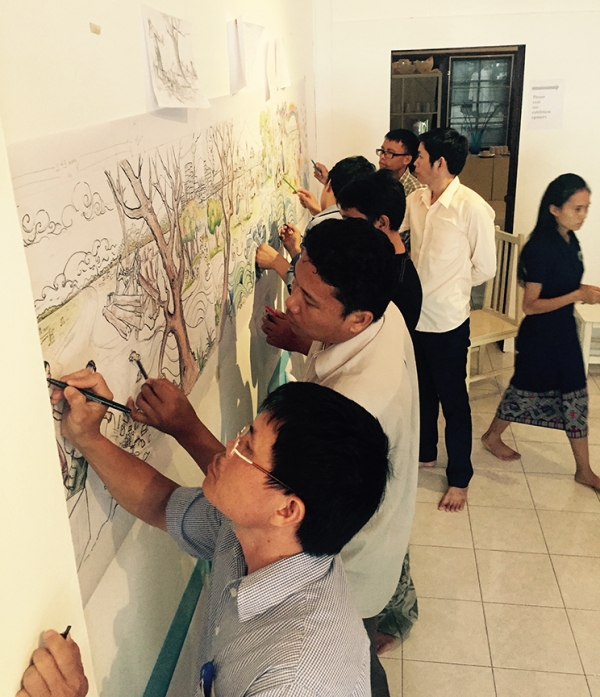
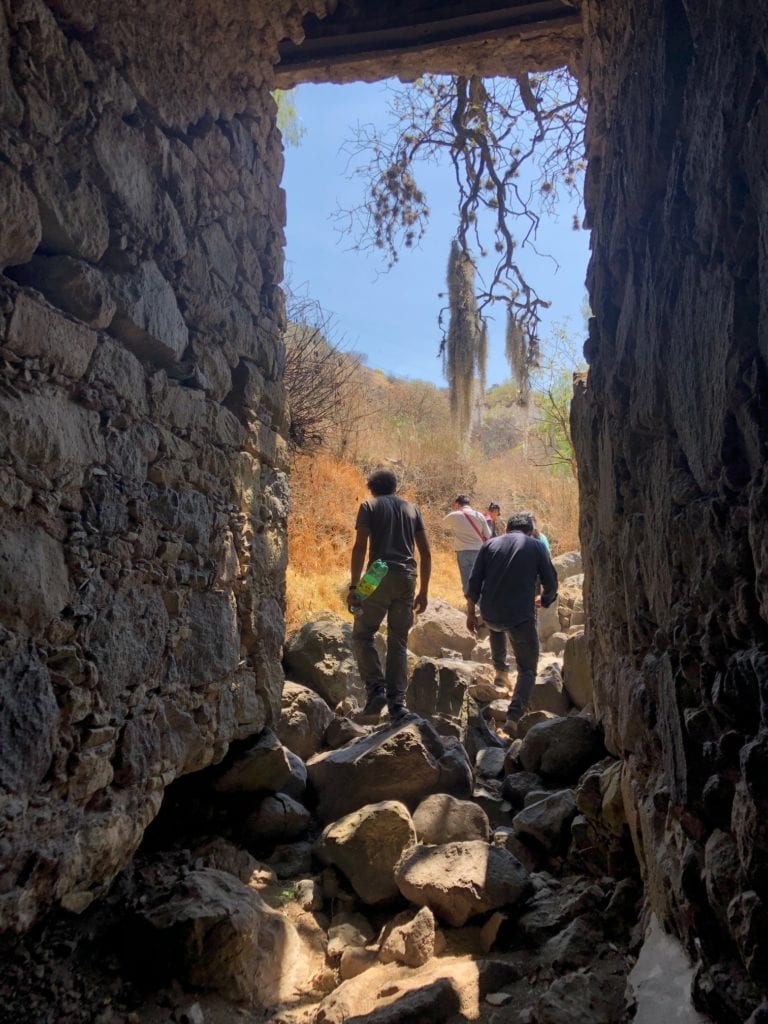
The resulting prototypes were exhibited at CITNOVA where participants shared their ideas with guests panelists and visitors through an Open House. I was incredibly proud of the ideas and projects that each team executed given the brief period of time to learn and absorb a large number of new processes, tools, and technologies.

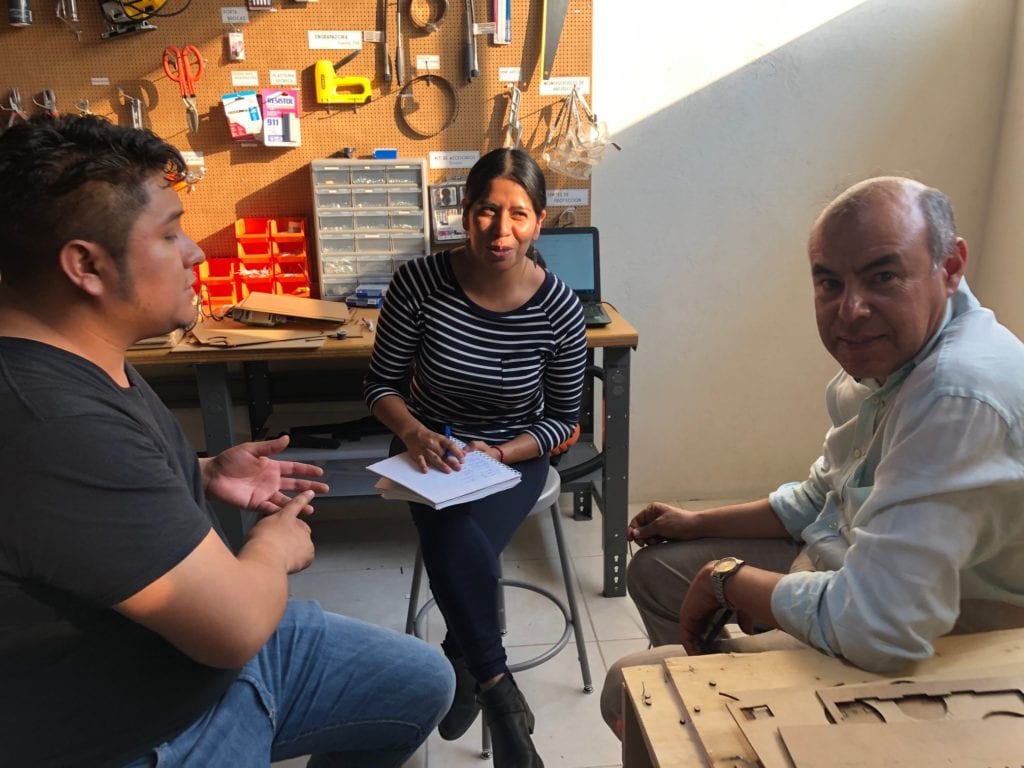
Personally and professionally, I was blown away by these participants who had a deep knowledge and appreciation for their cultural heritage, home cities, and personal histories. Being able to visit many ancient sites was a true gift, as was spending time with this incredible group of people. Our visit to Atlantes de Tula was incredibly transformative for me personally.
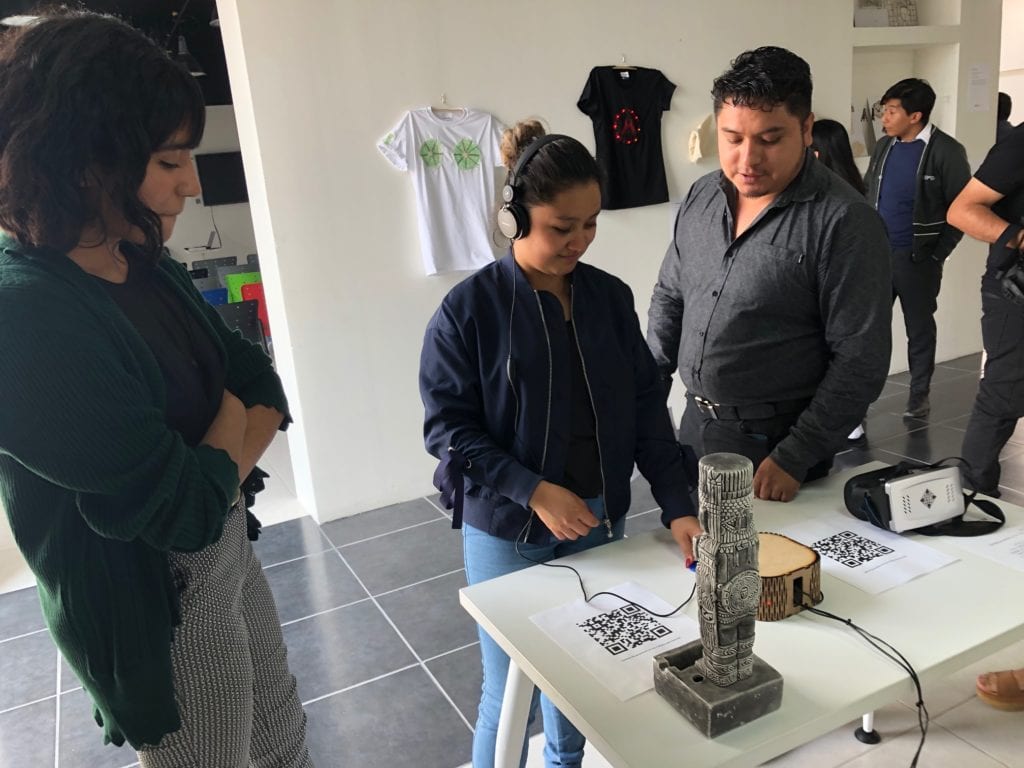

The participants came up with incredible ways to utilize the technical skills that we had covered, including 3D-printing bordado embroidery patterns onto fabric, which blended traditional crafts with new technological approaches. One group explored the rich historical languages present in the Pachuca area by creating prototypes that highlighted indigenous languages through AR magazines and light installations, while another created projects that were visual representations of the history of mining culture through wearable bioplastics. The final group used RFID-embedded objects to create interactive videos of the cultural sites we visited.
This experience was incredibly meaningful, and professionally shifted my approach to considering how new technologies can be used in conjunction with traditional craft in the future. Utilizing new technologies allowed complex issues like cultural identity to become more accessible to a broader public. I am fully confident that the participants from this exchange will continue to develop their prototypes. I look forward to continuing the discussion of these projects online and hope to visit Pachuca again in the future.

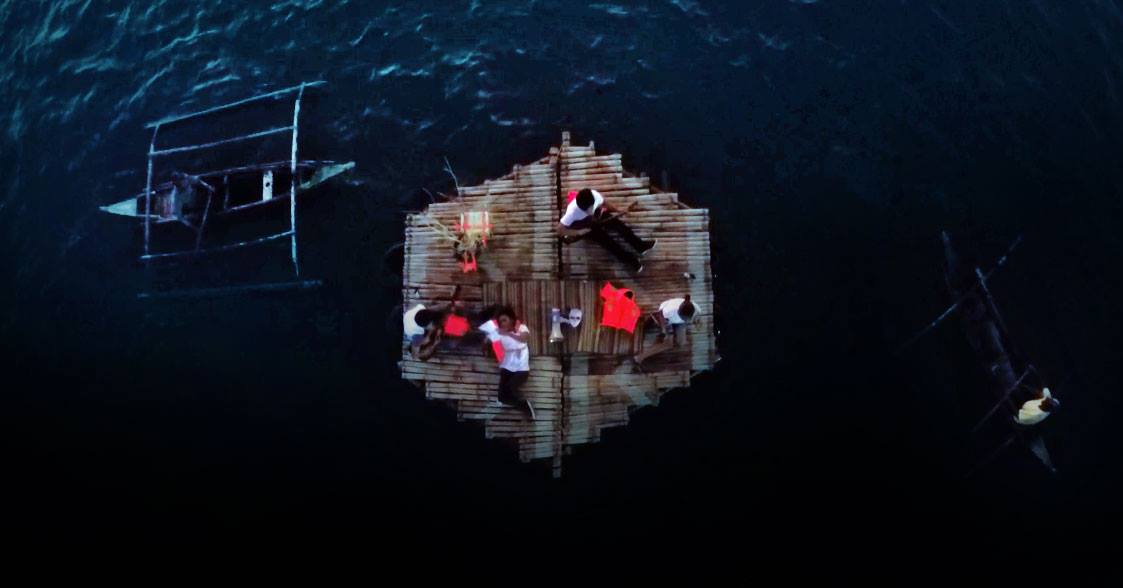
I awoke my first morning to the sound of bells ringing and birds singing. Somehow, my driver had found my little apartment the night before, though this part of Kathmandu, Old Patan, is so ancient that it has no street signs, no street names, and there are no numbers for houses. Places here are referenced by family names or the nearest temples. Streets were developed as footpaths, and only a few are wide enough for a single car to pass through. Dhumbahal House is where I lived, named after the nearest Hindu temple, though there is a Buddhist Stupa outside my kitchen balcony and a Hindu shrine below my living room. They are visited continuously, both day and night.
By day three I’d recovered my lost luggage, met with the Embassy, and walked the mile through the old city to Nepal Communitere: an innovation hub, entrepreneurship incubator, and makerspace that supports a progressive vision for Kathmandu and greater Nepal. The team at NC is a vibrant community of Nepali people, many of whom have spent time in the U.S. or Britain, and I felt at home almost immediately with the delicious snacks and lively conversations.
For my residency, I taught a digital fabrication workshop to 16 people, aged 18 to 34, on the topic of women’s empowerment. All of the participants had laptops, some were practicing artists and others were from leadership roles in their work and community, and very few had digital design experience.
l led each day of the workshop in roundtable discussions with the question: “What does empowerment mean to you?” Some stories were difficult, others inspiring, and I deliberately (and transparently) fostered a safe and inclusive space so the participants and I could co-create a supportive community together. Though everyone had different perspectives, the consensus was that women want more choice when it comes to their bodies, access to education and employment, and who they form intimate relationships with and why. Each day ended with an introduction to 2D and 3D design software and tools to fabricate the components to make art.
Four teams emerged around themes within women’s empowerment: home, career, culture, and personal. When it was time for teams to start planning their projects, my workshop assistant and I tasked teams with describing how a visitor would explain their project to a friend, and to create the work starting with that description. Then we set to enhancing the artistic skills that participants brought with them by adding skills in digital design and fabrication.
In the photo above, the participants and I are visiting a digital foundry to see CNC machines, laser cutters, and vinyl sign making machines.
We had ten days to develop prototypes that would invite the public to add to the conversation around what it means to be empowered for women in Nepal.
There was such exuberant energy from participants that came from the project development! All around me, women were speaking their minds, supporting one another, and the feeling was contagious as others in entrepreneurship and artistic communities starting dropping in to see the work and telling others.
What surprised me most was that these projects were able to extend the safe and inclusive community we’d created so that visitors were now participating in the conversation we’d started during the workshop. Each team developed a project that was participatory in nature. Spectators became participants when the projects were unveiled at the Open House, and it seemed like all of Kathmandu was buzzing with the conversation about women’s empowerment.
Last month wrapped up the ZERO1 American Arts Incubator in Gwangju, South Korea in partnership with the Gwangju Cultural Foundation. Gwangju is widely known as the site of the Gwangju Uprising (or May 18 Democratic Uprising), when the public responded to martial law instituted by the government, the closing of schools, and the banning of political activities with a large-scale civil uprising. The uprising began at Chonnam University with students protesting, and quickly spread with tens of thousands of protesters, hundreds of deaths, and thousands of injuries. This uprising paved the way for the democratization of South Korea in the late 1980s, and the event is a major part of South Korea’s history and is still extremely present for many in the country. Working in this very politically and socially engaged city, it was interesting to learn about the current issues of social inclusion that the participants were experiencing, that ranged from issues like processing trauma in the body to dealing with the complex relationship between younger and older members of society.
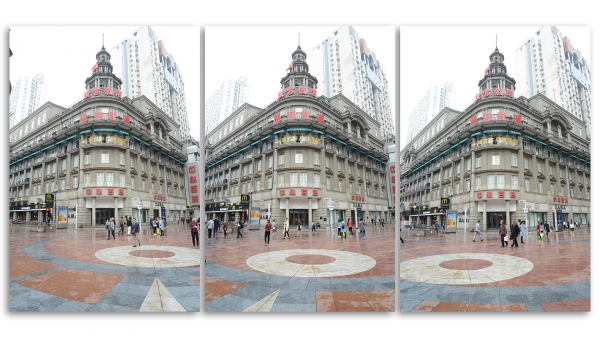
We began with a one week workshop, where we got to know one another, talk through the themes, and learn some new skills. My approach to the workshop was to use the concept of “home” as an entry point to the issue of social inclusion. “Home” is an idea we can all relate to—we have all felt at home at some point, whether it is a physical place, a group of people, or a mode of being, But what makes someone feel “at home” and what does it mean to belong in a space, community, or city? What might a future home look like, if we imagine one that is more inclusive?
Artist Joo Hong visited to talk about her social performances and interventions in Gwangju, around Korea, and in New York Times Square.
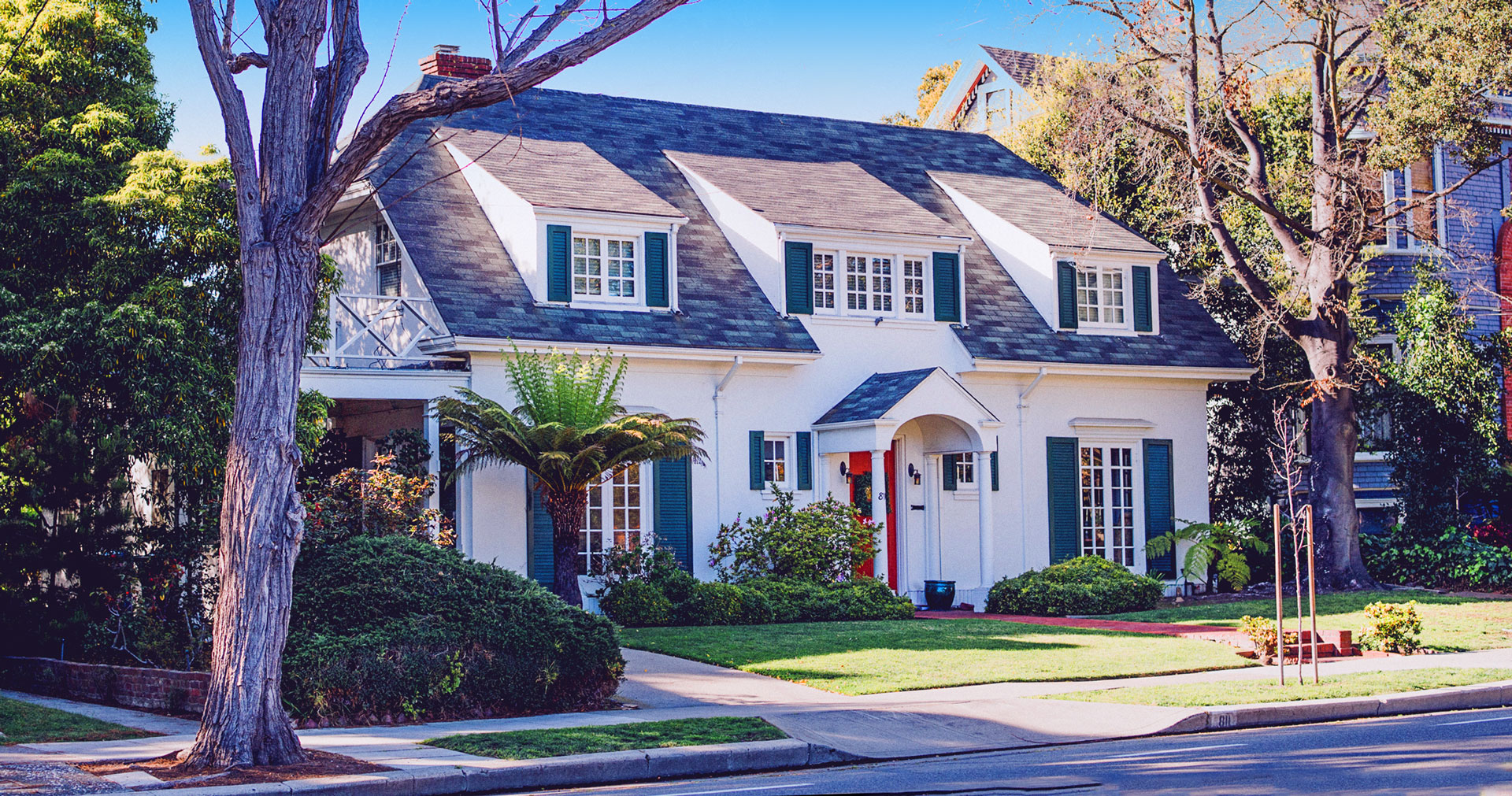
We tried to learn through action and our bodies. Participants brought objects that captured their feeling of home and improvised with them. Through these activities, we got used to the idea of creating space together, negotiating, and imagining. We were building a framework for ourselves.
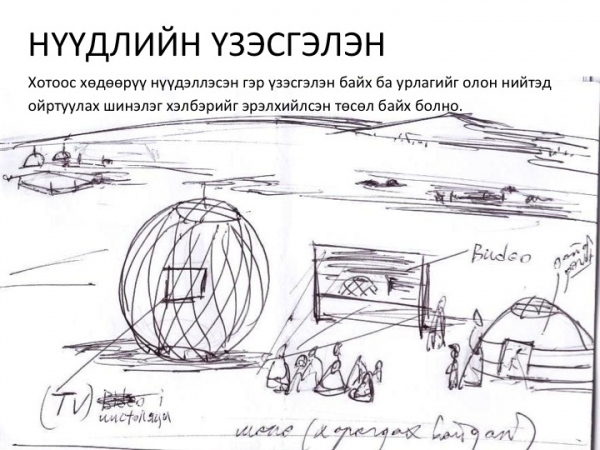
We also visited Yangnim-Dong and thought about the meaning of doing this work in Gwangju today. We toured the beautiful Chinese Holy Tree (Horang Gasinaumu) Guest House and learned about the missionaries and religious and spiritual roots of the city that put a priority on caring for family, city, and justice. This felt very relevant to our themes of home and social inclusion.


We also spent time learning technical skills to make the projects. We learned coding to create interactive drawings using p5.js. We used machine learning to train simple systems to recognize things like facial expressions, body positions, or basic objects. Then we thought about how to create interactive installations combining elements of camera input, projected content, and audience interaction.
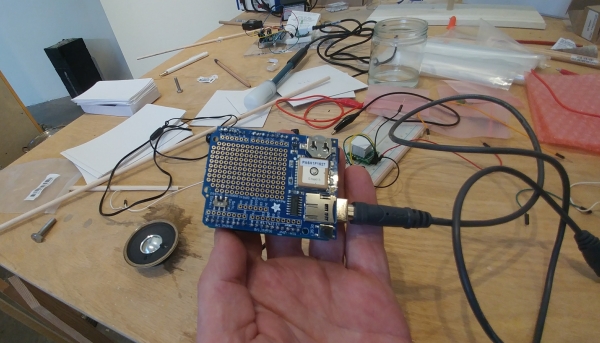

After that busy week, we formed four teams and began developing team projects that would make up one bigger installation. The “Smarter Home” project reimagines smart homes of the future, trying to bring technology into personal space on our own terms. Each team selected an issue within the broader scope of social inclusion to address through a conversation room they created within the larger structure. They then developed one mode of interaction to use as the mechanic for their piece. This meant incorporating machine learning, audio processing, and computer vision techniques to track and respond to the presence of participants.
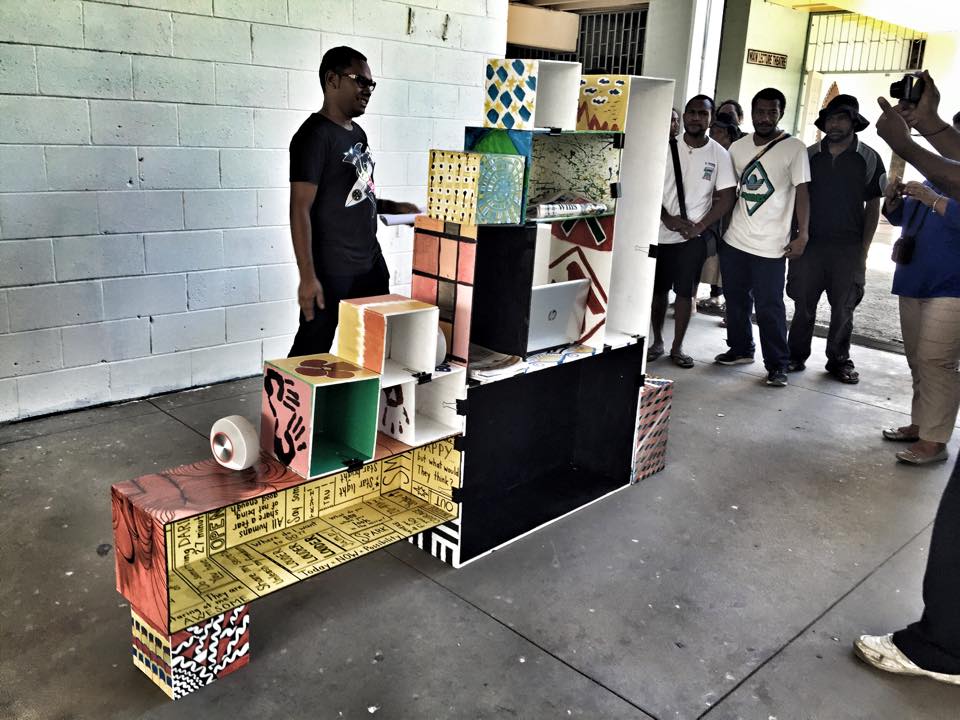
Nawon Paek, Taeguen Lim, Gaeyang Park, and Inhwa Yeom’s project III-iteracy raised awareness about illiteracy and the difficulty some people face in navigating the city. Creating an installation that reacted to eye blinks, they used coding techniques and visual effects as metaphors for understanding different experiences of seeing and reading.

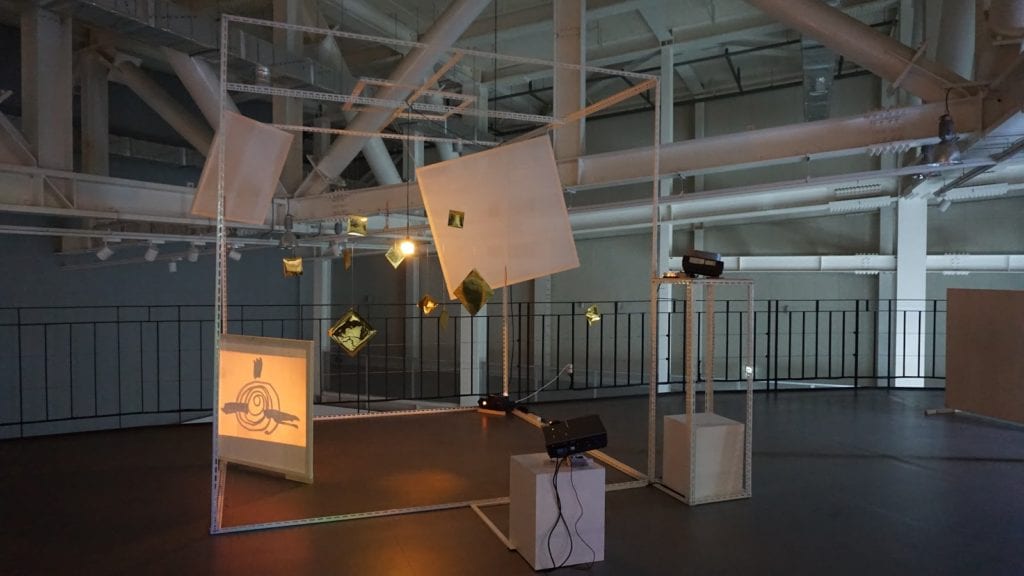
Do Won Kim, Jung Suk Noh, Yun Jeong Kim, Ho Jong Jeong, and So Jeong Yun’s project took on imagined roles of family members to create their project I LOVE YOUt. Expanding on the traditional Korean pastime yutnori, they envisioned it as a means to communicate with family members and understand the history and spirit of Gwangju. It used machine learning to introduce a new game format that combines the past and the future by digitally linking analog games, and presenting the audience with image or text questions to share experiences from different moments in time. The experience drew on a shared sense of sorrow to form a community of hope.
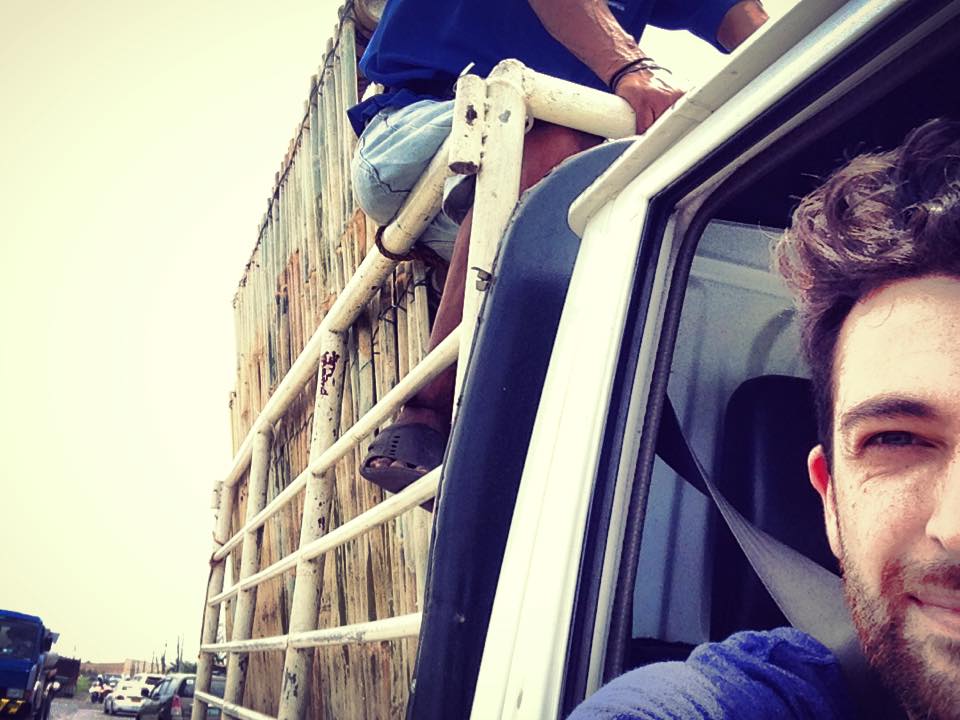
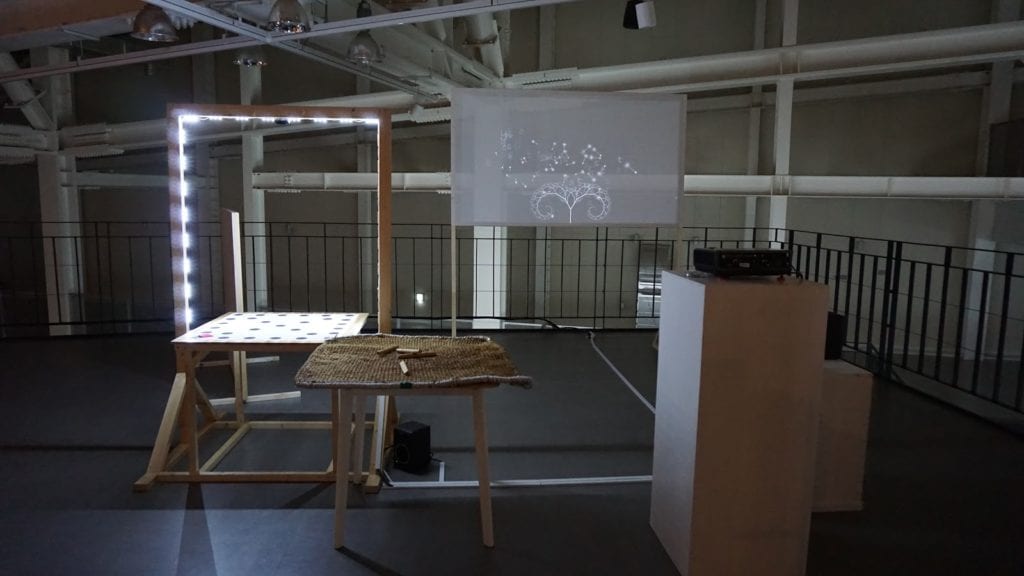
Changwan Moon, Hyewon Kim, and JeongNang Choi’s project Feel-Fill investigated the way emotional pain is experienced in the body. After surveying local community members about their embodied pain, they created an interactive visualization that reacted to voice. When someone screamed in their room, a large portrait of the body would illuminate with mapped projections at the pain points.
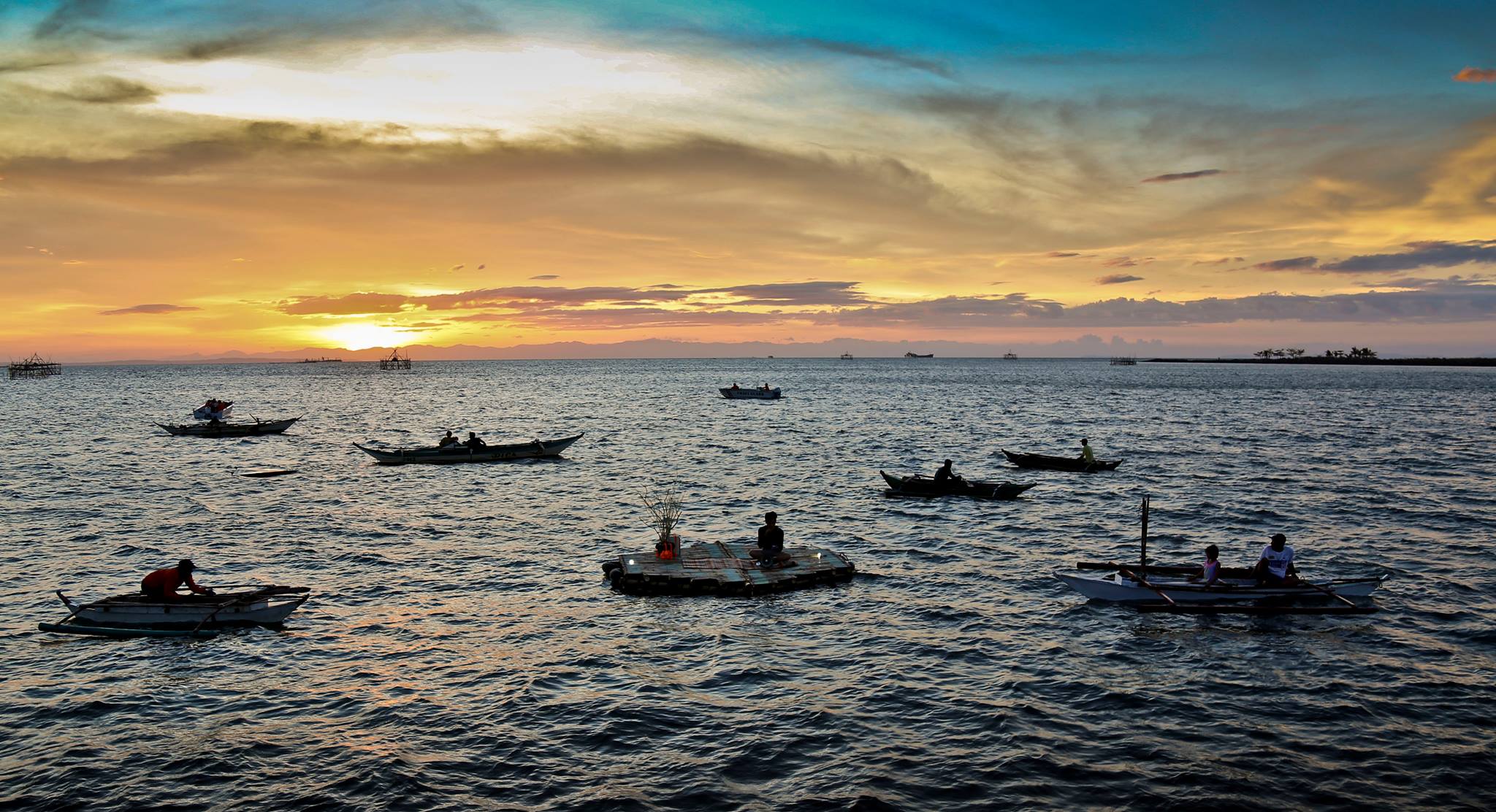
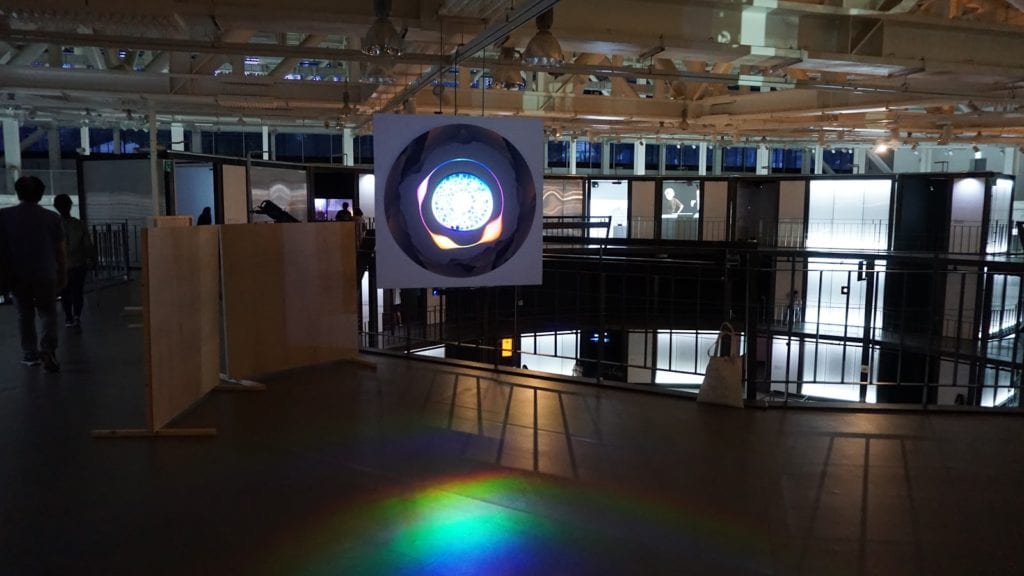
Kitae Park, Minju Do, and Yonghyun Lim’s project How to Understand Your Daughter took on the smaller society known as the “family.” As they put it, “Home is a place where two different social roles collide: between what parents want their children to act like (as a member of the family) and what the children want to act and live like (as a member of a society).” In the middle of the installation is a diary by Minju, one of the team members, onto which a pre-recorded video of her day and her artworks are projected. The audience was invited to react to Minju’s day, experiencing it from her mother’s viewpoint, and respond using their bodies to two options: 1) I am worried about her future, 2) I am not worried about her future. The installation detected the bodily responses and visualized the broader community’s outlook on Minju’s future.
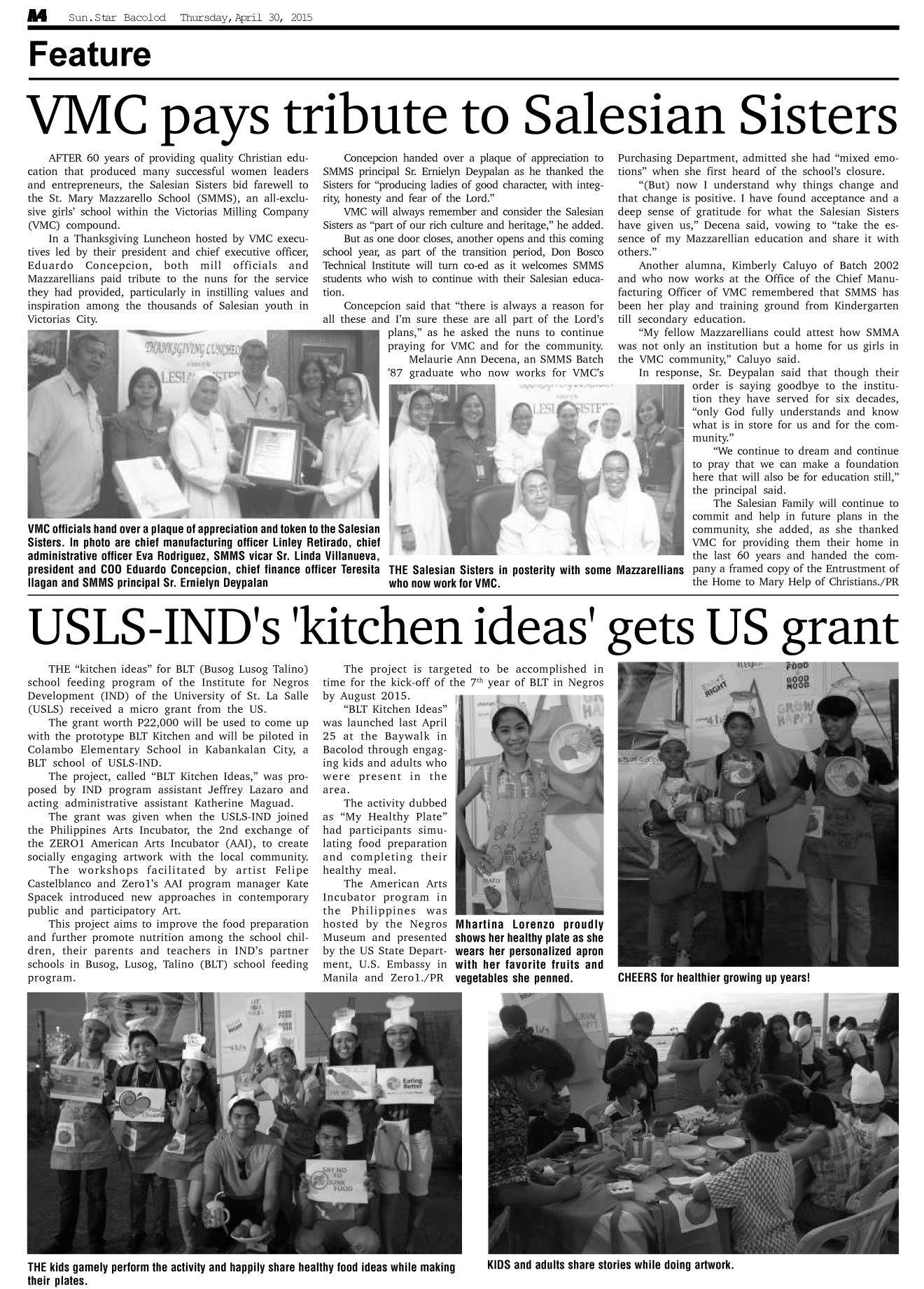
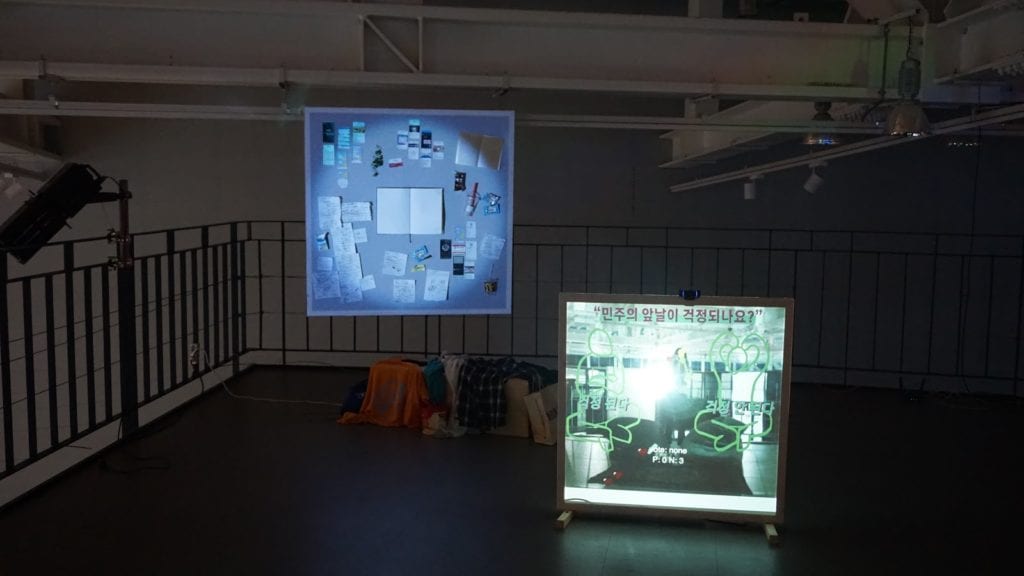
Together, the four works came together into one larger installation that offered our own “Smarter Home / 더 똑똑한 집.” A panel review and open house involving the public wrapped up everything up.

Earlier this month, we had the opportunity to stage a new iteration of this work as part of the International Symposium on Electronic Art (ISEA) exhibition that will be held at the Asia Culture Center. The installation was developed significantly to adapt to a new site, audience, and ongoing goals of the participants.
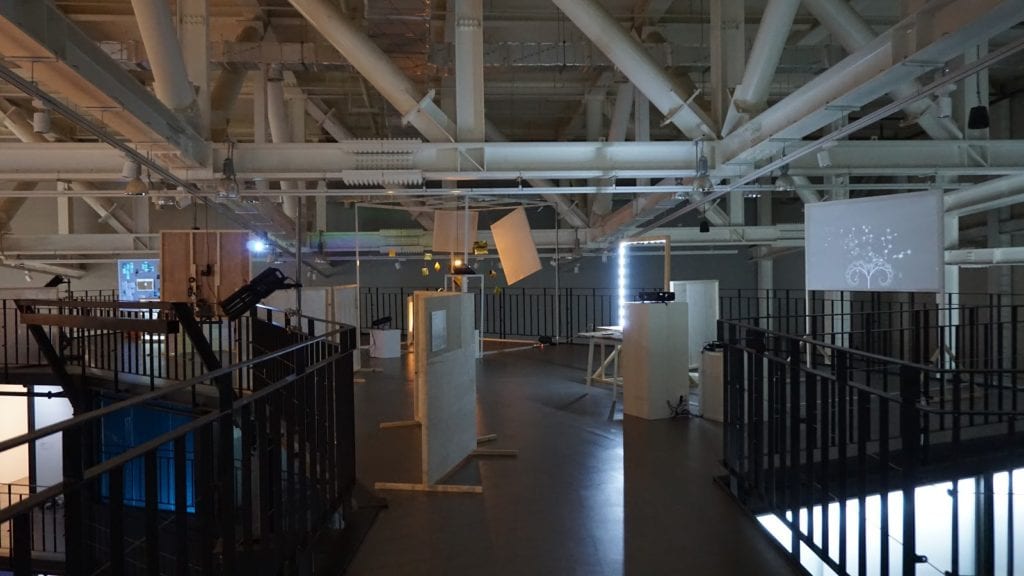
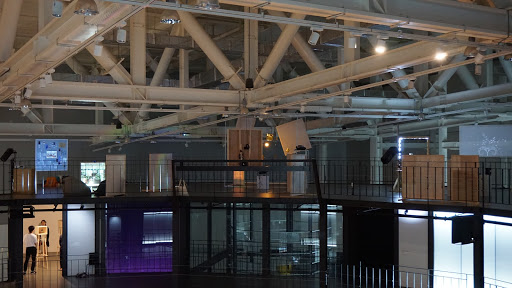
This exchange taught me a lot about communication, which I think is at the core of feeling like you are home. As we navigated language differences, I found my definition of “understanding” expanding. I realized that though we may have different interpretations of what was being said, we could still find places to connect and build together. In some ways, it offered a wider, more forgiving and creative way of collaborating. Each of us were able to bring our individual realities into a loose framework that created something bigger.
I must say many thanks to Inhwa Yeom, our amazing production assistant, interpreter, and team member, the whole team at Gwangju Cultural Foundation, including Yong Soon, JinKyung Jeong, and Jinsil Choi, Shamsher Virk and Maya Holm who provided so much support from afar at ZERO1, the US Department of State for supporting this work, and all the participants who were so creative, committed, and generous with their energy.